












Reading through this month’s stories got me thinking about preparation and safety—two things that are especially important at this time of year. For the most part, BCbased boats are still hunkered down, though some are slowly waking from their long winter nap and shaking off the dust (and mildew). Others, those early risers and eager beavers are already heading out on short trips and even longer forays—taking advantage of the empty anchorages, quiet marinas and increasingly longer days.
Shoulder season cruising (if indeed we can call March shoulder season) is not for the faint of heart. With fewer boats on the water, the likelihood of someone coming to your aid if something goes wrong is dramatically reduced.
That doesn’t mean boating should be limited to a few calm, sunny days in July—a little adventure is good for the soul. It does mean that it’s critical that you are prepared and self-reliant when you are out on the water—and that preparedness should extend to shore excursions.
Wendy Hinman and her crew learned that firsthand on a shoulder season cruise to Chatterbox Falls in Princess Louisa Inlet (page 46). Reading the story, it’s clear that the author had misgivings about undertaking the hike and voiced her concerns at multiple points before and during the trek. In the end, failure to trust those instincts and a lack of preparation in case something went wrong, led to near-dire consequences. I don’t mean to criticize Hinman and her crew. Hindsight is 20/20 and 99 times out of 100 the hike ends in the warm
cabin with a bowl of pumpkin soup and a great story to tell. Unfortunately, something did go wrong and the lack of preparation worsened an already risky situation.
Contrast this accident with Bert TerHart’s cross-Canada adventure (page 38) and there is a marked difference in preparation and planning. TerHart, a Gabriola Islander, is a life-long sailor with a military planning background so it’s no surprise that his trip was excruciatingly well thought out. Gear was tested and approved. Strategies were practiced and tweaked. Very little was left to chance. When issues did arise, TerHart analyzed and adapted.
There is much to be learned from these adventures. The big lesson for me: If attempting any risky behaviour, and boating in the shoulder season is not without its risks, you should have an exit strategy. What is your plan if something goes wrong? Where are the closest marinas if you need to get to help as quickly as possible. Familiarize yourself with the local emergency services. Where is the closest hospital or clinic? Do you know who to contact if you need assistance. If something doesn’t “feel” right maybe it isn’t.
I was reminded again at last month’s Vancouver Boat Show just how many opportunities there are to improve your knowledge and skills. Does someone on board know first aid? Have you considered installing an AED on the boat? Do you know how to properly operate your VHF radio? The more skills you bring on your next boating trip the more you reduce the risks.
Then the next thing you need to worry about is cleaning off the mildew.
–Sam BurkhartTHE AFTERGUARD
EDITOR
Sam Burkhart editor@pacificyachting.com
ART DIRECTOR Arran Yates
ASSISTANT EDITOR Blaine Willick blainew@pacificyachting.com

COPY EDITOR Dale Miller
AD COORDINATOR Rob Benac
DIRECTOR OF SALES
Tyrone Stelzenmuller 604-620-0031 tyrones@pacificyachting.com
ACCOUNT MANAGER (VAN. ISLE) Kathy Moore 250-748-6416 kathy@pacificyachting.com
ACCOUNT MANAGER Meena Mann 604-559-9052 meena@pacificyachting.com
PUBLISHER / PRESIDENT Mark Yelic
MARKETING MANAGER Desiree Miller
GROUP CONTROLLER Anthea Williams
ACCOUNTING Angie Danis, Elizabeth Williams
CONSUMER MARKETING Craig Sweetman
CIRCULATION & CUSTOMER SERVICE Roxanne Davies, Lauren McCabe, Marissa Miller
SUBSCRIPTION HOTLINE 1-800-663-7611
SUBSCRIBER ENQUIRIES: subscriptions@opmediagroup.ca
SUBSCRIPTION RATES
One year Canadian and United States: $48.00 (Prices vary by province). International: $58.00 per year.
Editorial submissions: Submissions may be sent via email to editor@pacificyachting.com or via mail with a self-addressed, stamped envelope. Queries are preferred. The publisher assumes no responsibility for lost material.
From time to time, we make our subscribers’ names available to reputable companies whose products or services we feel may be of interest. To be excluded from these mailings, just send us your mailing label with a request to delete your name.
Printed in Canada
Return undeliverable Canadian address to Circulation Dept. 802-1166 Alberni Street Vancouver, BC V6E 3Z3 Canada
Contents copyright 2022 by OP Media Group Ltd. All rights reserved. ISSN 0030-8986
50%


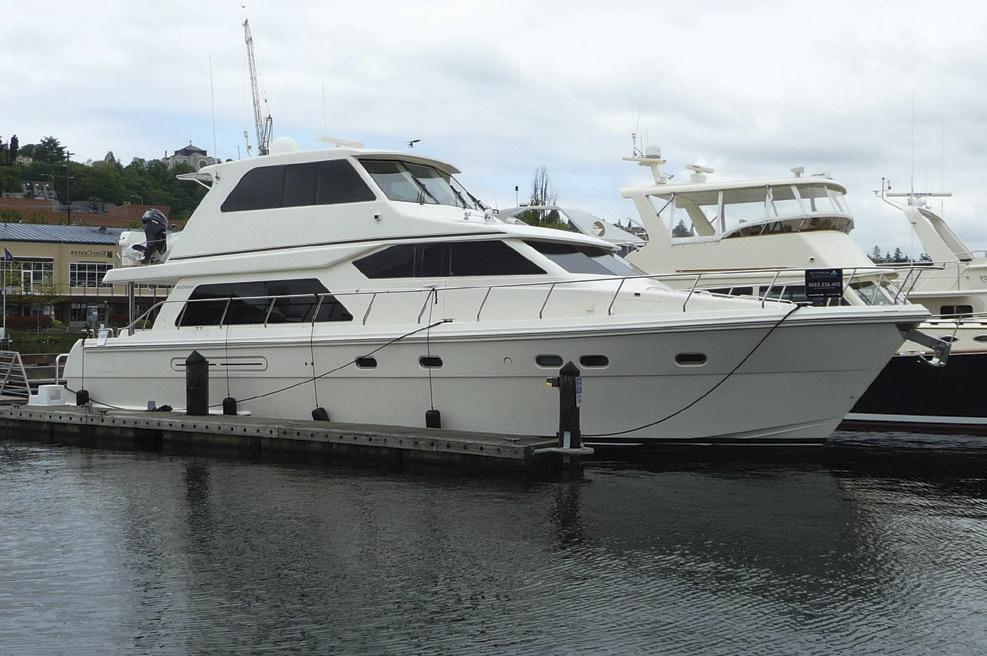

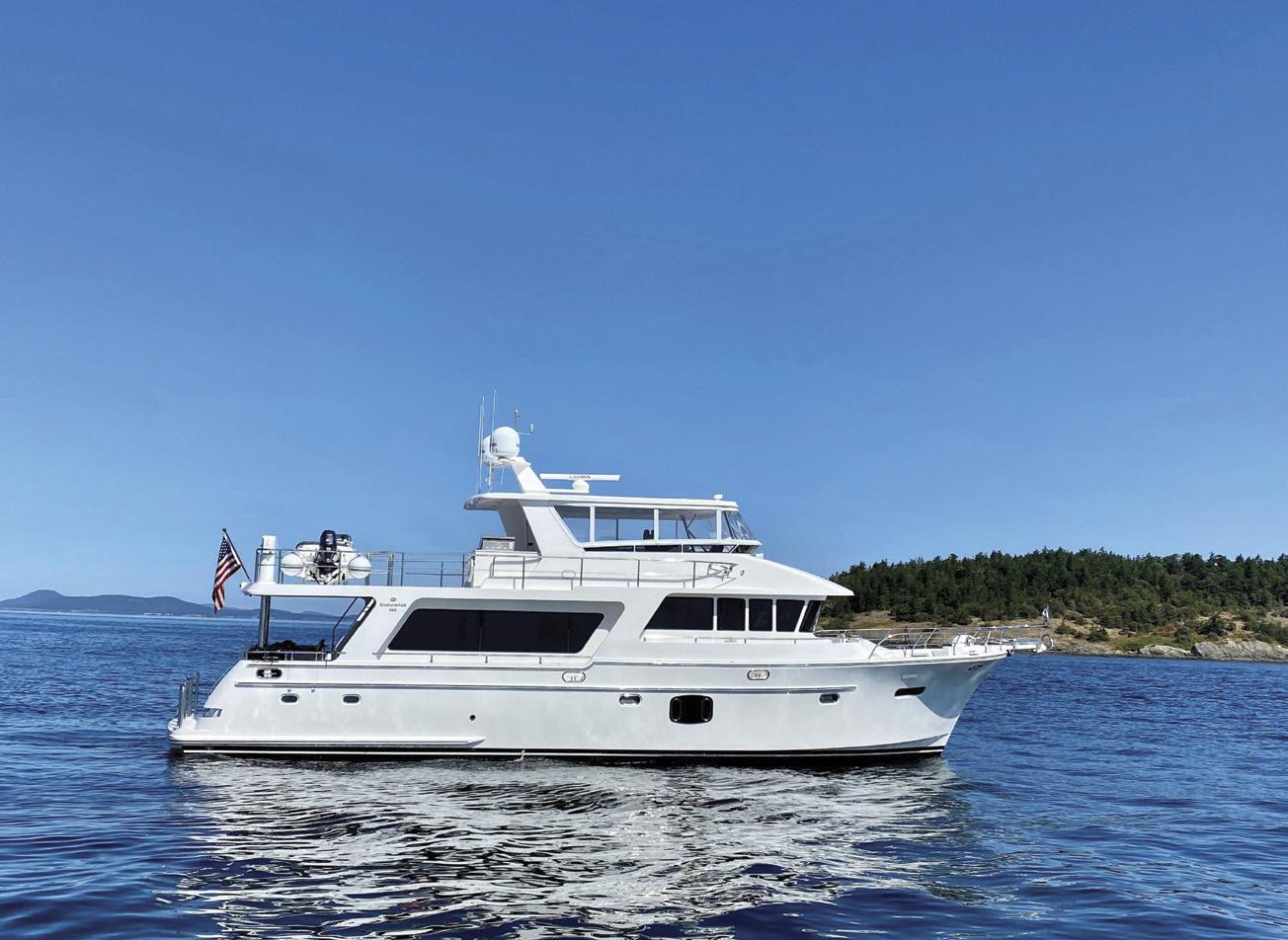


We thank you for publishing Diane Selkirk’s informative article on Commercial Anchorages in the Salish Sea in the November 2022 issue. The need to bring this issue to light is paramount and very timely as Phase 3 of the Public Engagement has commenced with the Port of Vancouver [recently] holding information meetings in key communities to answer the tough questions and address concerns of the residents in the affected areas.
The proposed “Code of Conduct” for anchored ships will be a prime topic of debate no doubt. And one that we know won’t work for many reasons. We’d like to see these 33 anchorages eliminated not condoned.
As a boater and marine steward on Pender Island I have been watching this freighter activity for the last 40 years— the exponential increase in the last several years has sounded the alarm—the
risks in the environmentally sensitive Salish Sea far outweigh the monetary benefits. It is blatant exploitation and we need to stop it.
—Michelle MarsdenI thought I would write to bring to your attention a small error in the [January 2023] issue that I received this morning. The cover promises a gunkhole report about Laura Cove, which is in Desolation Sound, but the article is actually about Laura Bay on Broughton Island. A good article either way, but just not the same.
—Ray KeatingThanks for the letter. You’re correct, the cover should have read Laura Bay rather than Laura Cove—both are fantastic destinations. We apologize for the error.—Eds.
Quarter-inch-thick hull. Eight-foot-wide bottom. Pair this boat with twin engines, and you have the recipe for safety that professionals and family fisherm












What do recreational boaters complain about? Lack of wind, standing waves and the high cost of buying marine equipment. But sometimes you can still find bargains to repair or embellish your boat. For the 19th time, the Maritime Museum is holding its Massive Marine Garage Sale at Victoria Harbour’s Ogden Point on March 25. Here’s your chance to find that part you’ve been looking for, meet fellow sailors and enjoy the camaraderie of finding a good deal. Or secure an opportunity to sell the used or superfluous items that are cluttering up your garage or basement. Your spouse will be grateful!
The Marine Garage Sale offers an array of opportunities for both sellers and buyers. Usually, the larger equipment is displayed outside, including dinghies, kayaks and trailers. Inside, marine merchants can get a table(s), clear out their storage areas and put their surplus goods up for sale. Among these vendor tables, boaters
may just pick up that extra fender they need, or a batch of line so next time they can stern-tie to shore. A cruising guide, marine history or maritime adventure tale among the book offerings might grab their attention. Lubricants, nuts and bolts, paint and a wealth of supplies mariners have dug up from their basements and lockers, including some collectibles, will also be on hand.
Date: Saturday, March 25, 2022
Location: Pier A at the Breakwater District at Ogden Point, 185 Dallas Road, Victoria Hours: 09:00 to 12:00
If you’re keen, you can arrive early and beat other shoppers for a modest $5 increase in entrance fee ($10). That five extra bucks, as well as the standard entrance fee of $5, go to a good cause. It supports the Maritime Museum’s operations and helps with the running of school and public programs. Don’t fear the cold. Coffee, hot chocolate and pastries will be available by donation. A 50/50 raffle will also be held, with two draws. To set up a display or table, contact Anya Zanko at azanko@mmbc.bc.ca.
—Marianne ScottWebsite: mmbc.bc.ca/garage-sale






















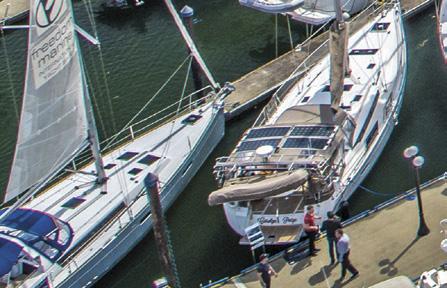

















pacificyachting.com/bookstore


1931-2022
John Forbes Cooper (Forbes), who is often credited with launching BC’s yacht building industry, has died in West Vancouver at age 91. Born in Winnipeg and having moved to Edmonton as a toddler, he grew up with an eye for business opportunities. He hung out with engineers and construction folks, then started a concrete business. By 1966, he’d moved to Vancouver and, after undertaking ventures into automotive and motel businesses, spotted an auction notice for the faltering Canadian arm of US yacht builder Columbia Boats. He opted to make an offer—without any knowledge of boat building. His bid was the lowest, but the US parent company accepted it after Forbes contacted them and persuaded them of his business acumen. Forbes learned about fibreglass boat building at the library and entered the boat business as Cooper Yachts in 1970.
Forbes became known as a man who connected with people and his crew liked working for him. His affability along with his business savvy carried him far. He partnered with architect Don Martin (of Martin 242 and 29 fame) and, under licence, built a line of Catalina 22s and 27s at his yard in Port Coquitlam. The Catalina 27, also constructed in California, became one of the most successful keelboats ever. He began building yachts under his own name, also teamed up with naval
architect Stan Huntingford and produced a number of boats of different designs and sizes, including the Cooper 508, which Cruising World’s Dan Spurr called the “Super Cooper” in a 1983 review. His boats ranged in size from 22 to 68 feet. Other yachts, notably the Maple Leaf and Sea Bird motorsailers, and Banner sailboats of various sizes also left Cooper’s yards. He launched the Prowler line of powerboats. He also fabricated aluminum masts, and when the recession hit in the early 1980s and slowed boat sales, Forbes initiated a charter boat company.

When he contemplated retirement, he rejected an offer from Jim Pattison but took another offer later in 1990. The buyer was unsuccessful, and the yard soon closed.
Forbes found retirement boring, so he restarted custom boatbuilding under FC Custom Yachts, constructing various yachts as large as 115 feet. He repurposed the mold of the Monkdesigned Tolly 43 which was reborn as the Westcoast 46. After selling the company to Ron Rayburn, he cruised BC waters with his wife Helen who died in 2018.
Forbes is remembered by his second wife, Joan, children, grandchildren and many nieces and nephews. In addition, many of the boats he constructed are still afloat and his name continues to survive in Granville Island’s Cooper Boating.
—Marianne Scott
Every year the Vancouver Martin 242 Fleet holds a meet and greet at the Royal Vancouver Yacht Club to enlist those interested in racing on these one-design sailboats. If you have mastered the basics of sailing and would like to try racing, or if you are an experienced competitive sailor and would like to pair your skills with some of the Pacific Northwest’s top sailors, come to the “New Crew Night” on Wednesday, March 29 to meet skippers and learn about the 2023 racing and social events program. It’s a great
way to meet new people.
Registration can be done on Eventbrite by searching “M242 new crew.”

The Martin 242 is a fast and nimble four-person keelboat that offers the best in competitive sailing. As boats are identical, performance comes down to teamwork, tactics and boat speed.

The M242 is the most active one-design keelboat in the Pacific Northwest, with fleets at Vancouver’s English Bay, on Vancouver Island and in Washington State. 27 boats raced in the most recent North American Championship.
Vancouver BC’s English Bay M242 Fleet
20+ boats compete in the Wednesday evening and weekend events. Contact Matt Collingwood at mattcollingwood@ gmail.com.

Vancouver Island
M242 Fleet
21+ boats are regularly joined by Washington State M242s in an active race program based out of Victoria and Nanaimo. Contact Luke Acker at lukeacker@gmail. com.


Washington State
M242 Fleet

The WA fleet is anchored by six boats on Orcas Island, with five additional M242s in Bellingham, Anacortes and other locations. Orcas Island Yacht Club hosts one-design club racing weekly from May through September on West Sound. Contact Ken Machtley at ken@machtley.com.

Sideshift recently released a dual-thruster model capable of serving boats up to 40 feet in length with multi-engine set-ups. The new ST230-Dual attaches to the cavitation plates of twin or triple outboard/outdrive motors, providing boaters with complete docking control in any situation. The unique mounting position creates zero drag as the thrusters ride above water when the boat is on plane, and the units can be easily installed in-water in only a few hours. For more information go to sideshift.com.

Yamaha Motor Canada has announced their largest outboard engine ever: the XTO Offshore 450 The 450-horsepower outboard features the same 5.6-litre of big block displacement and features as the XTO 425. The XTO Offshore 450 comes with Yamaha’s TotalTilt feature for fast, easy engine tilting. Go to yamaha-motor.ca to find out more.


Unveiled in January, the Brabus Shadow 900 Stealth Green Signature Edition is the latest luxury tender offering from Brabus Marine. The Shadow 900 is powered by dual Mercury 450R 4.6-litre V8 four stroke racing engines and can reach speeds of 60 knots. Check out brabusmarine.com to learn more.





Independently published, 2021. Available from Amazon. 265 pages, $20
How many people in their 86th year sail throughout the islands of Scotland, then from England to the Canaries via Biscay and Madeira and then make yet another cruise of Scotland in the cold gales of autumn? Of course, none other than the unstoppable polar sailor and mountaineer, Bob Shepton.
A few years ago, Bob wrote an excellent book recounting many of these endeavours. Addicted to Adventure: Between Rocks and Cold Places (Adlard Coles, 2014) opens with a disastrous fire during his winter on board Dodo’s Delight in the Greenland ice. It goes on to tell tales of pioneering routes on un-climbed cliffs, of a dismasting in Antarctica and of a Northwest Passage transit, to name a few. But he left many stories untold. Happily, his newest book fills the gaps, and was just released on Amazon.
Addicted to More Adventure: Risk is Good, Enjoy It begins with Bob’s youth, in North Africa in 1954 with the Royal Marines. Evidently not finding the desert warfare training to be enough for his level of energy, he and two fellow Marines set off on a 50-mile trek across the hot desert to Tripoli. They covered those 50 miles in only one day, and even made time to drink coffee with a Bedouin in his tent along the way. Adventurers today completing something similar would probably
call it an ultra-marathon and make a bit of noise about it on social media. Not Bob. It was just a “yomp” (hike) to him.
This kind of refreshing understatement characterizes the whole book. Whether he’s describing the frequent gales he and his young crew encountered on the long passage from Antarctica to Easter Island or the difficulties of landing climbers onto big walls from the deck of Dodo’s Delight in Greenland, he does so with humour, lightness and quiet understatement.
In addition to the high latitude stories, Bob tells us about a delivery to Peru, another from the Mediterranean, and exploring regions closer to his home in Scotland. The book ends with a voyage to the Antarctic island of South Georgia aboard a friend’s boat. The return trip from South Georgia to the Falkland Islands was marked by a gale strong enough to merit the use of the boat’s drogue. A reader familiar with Bob’s first book can’t help but recall another passage Bob made, sailing nearly 1,000 miles from the former Faraday base in Antarctica to the Falklands under jury rig after the dismasting of Dodo’s Delight.
Throughout Addicted to More Adventure, Bob includes excellent photographs that add to the stories. Having read both books now, I marvel that one person has packed so much superb adventure into his life.
 —Ellen Massey Leonard
—Ellen Massey Leonard
V10 Verado outboards shift your expectations performance feels like. They come to power, propelling you forward to sensational smooth, quiet and refined, they deliver only Verado outboards can provide.
Mercury engines are made for exploring.

expectations of what high-horsepower to life with impressively responsive sensational top speeds. Exceptionally deliver an unrivaled driving experience exploring. So are you. Go Boldly.

V10 Verado outboards shift your expectations of what high-horsepower performance feels like. They come to life with impressively responsive power, propelling you forward to sensational top speeds. Exceptionally smooth, quiet and refined, they deliver an unrivaled driving experience only Verado outboards can provide.

Mercury engines are made for exploring. So are you. Go Boldly.

GA Checkpoint and Boating BC Association were invited to attend SD42 (Maple Ridge & Pitt Meadows) Trades Showcase on January 18 at Thomas Haney School. This event was attended by close to 400 students and parents. It showcased local businesses in the trades as well as post-secondary trades schools. There was a great deal of interest in the various trades represented at the forum. Brendan Keys (GA Checkpoint) and Bruce Hayne (Boating BC) were invited to join on the discussion panel and spoke about their experiences in the industry and as well as the need for skilled trades personnel in the marine industry. GA Checkpoint exhibited a Yamaha dirt bike and an inflatable boat which garnered a lot of attention.
Recently, Skilled Trades BC (formally ITA) announced that the Marine Mechanical Technician program will now be a “Foundation Program” meaning that students no longer have to have a business sponsor to get into the program. This means that youth can now apply directly for admittance in the MMT program being offered at BCIT and Vancouver Island University.

There is a huge demand for skilled labour in the recreational boating and Power Sport sectors. These are wellpaying positions which can lead to many different career opportunities throughout the industry. As technology advances quickly, formal training is a must. To find out more about these and other opportunities, check out: boatingbc.ca/cpages/careers-inboating.
ANCHOR MARINE
Victoria, BC 250-386-8375
COMAR ELECTRIC SERVICES LTD Port Coquitlam, BC 604-941-7646
ELMAR MARINE ELECTRONICS
North Vancouver, BC 604-986-5582
GLOBAL MARINE EQUIPMENT Richmond, BC 604-718-2722
MACKAY MARINE
Burnaby, BC 604-435-1455
PRIME YACHT SYSTEMS INC
Victoria, BC 250-896-2971
RADIO HOLLAND
Vancouver, BC 604-293-2900
REEDEL MARINE SERVICES
Parksville, BC 250-248-2555
ROTON INDUSTRIES
Vancouver, BC 604-688-2325
SEACOAST MARINE ELECTRONICS LTD
Vancouver, BC 604-323-0623
SEACOM MARINE LTD Campbell River, BC 250-286-3717
STRYKER ELECTRONICS
Port Hardy, BC 250-949-8022
WESTERN MARINE CO
Vancouver, BC 604-253-3322
ZULU ELECTRIC Richmond, BC 604-285-5466




























































































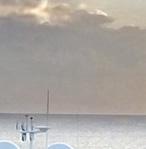


















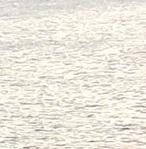



































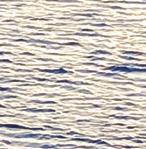





































































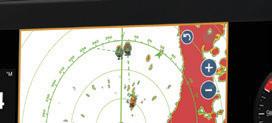


























Boaters are likely to view many more whales in 2023 after a record number of sightings this past year in the Salish Sea. In 2022, Bigg’s orcas, who travel between Mexico and Alaska, were seen by whale watching companies on 278 days, while humpbacks were sighted on 274 days between Campbell River and Puget Sound. Alert Bay-based Bay Cetology, a non-profit that studies cetacean populations, reported that the Bigg’s orca count had increased to 370, with

10 new calves born in 2022.

Bigg’s orcas were formerly known as transient orcas, or transient killer whales; their new name honours Dr. Michael Bigg, the Vancouver Island pioneering marine biologist whose research started the study of the different orca species.
Bigg’s orcas feed on seals, sea lions, other marine mammals and squid and there seem to be enough of these animals for the orcas to hunt and eat. Humpbacks also continued their comeback after being nearly hunted
to extinction for their valuable oil. The 1986 ban on commercial whaling has allowed for the humpbacks’ resurgence. Researchers with the Canadian Pacific Humpback Collaboration just announced in a news release that “396 individual humpback whales were photographed in the Salish Sea over the course of the 2022 season, the highest number documented in a single year for at least the past century. It appears that the food supply is plentiful helping to sustain these massive mammals.” The Collaboration also reported that of the

whales photographed last year, most of them have returned repeatedly to the Salish Sea, thus showing they have clear preferences for where they choose to feed.
The news isn’t that good for the northern and southern resident orcas. The three northern clans number around 250, but the southern families who stay around south Vancouver Island, the Gulf Islands and the San Juans only number 70. They are endangered because their main diet of chinook, chum and coho salmon has declined, and the region’s heavy traffic and pollution also decrease their ability to breed and survive.




Yachties may well see increased numbers of different whales this year. But be warned. Washington law requires vessels to give southern resident orcas (the



most endangered community) at least 300 yards (275 metres) of space. Boaters are also required to be at least 400 yards (365 metres) out of their path, or behind them.




For British Columbia, the federal Fisheries Act stipulates boaters must keep 100 metres away from all whales, dolphins and porpoises or 200 metres away if they are resting or with a calf. In


addition, give a scope of 200 metres to killer whales. For the waters from Campbell River south to Ucluelet, the rules are even stricter: you must keep 400 metres away from all killer whales. And it’s not just a warning. A Prince Rupert diver who got way too close by trying to swim with orcas was fined $12,000.




















































































 —Marianne Scott
—Marianne Scott

The melding of durum wheat, Pecorino Romano and freshly ground pepper make cacio e pepe the perfect March feast
Tnox. Down on the dock, folks we’ve only seen at the grocery store the past few months are swapping winter tales with snowbirds newly back from Arizona. And everyone’s talking about visiting Desolation Sound, the Broughton Islands, Telegraph Harbour and other familiar summer haunts.
days finally arrive. It’s time to try out new fuss-free recipes that don’t require a lot of ingredients.
There’s something ominous about March, given that Julius Caesar met his demise smack dab in the middle. But wait! There’s good stuff happening, too. Best of all, vernal equi-
It’s time to exchange dreams and wishes for actual plans. It’s time to wash the grime off the boat, replace worn lines and be ready to pull away from the dock when the long, sunny
Shelf-stable and endlessly versatile, pasta ranks high on the cruising menu. Right now, as I’m trying recipes I’ve never made before, I’m wondering if, on March 14, 44 BC, Caesar, having a premonition that he was eating his last dinner, ordered a heaping plate of spaghetti. Did he ask the cook to pile on the cream and parmesan? Did they even make parmesan in those days?





And what kind of pasta did they have, anyway?
I should have learned this back in junior high. What good did it do to study who conquered whom and when, but not the important stuff?
We heard about Marco Polo, of course. True, the Chinese had been making noodles since 3000 BC, so Marco may have tasted his first macaroni in 13th-century China, and maybe he brought some back. But the Chinese weren’t the only ones who had figured out how to put flour and water together. An Etruscan tomb dating from the fourth century BC held evidence of what appears to have been pasta. And back in the first century BC, Horace, a Roman poet, referred to sheets of dough used as food. Therefore, I wouldn’t be at all surprised if Caesar harboured a craving for it.
Of course, if he didn’t know Brutus was going to do him in, he probably didn’t record his last dinner, but suppose he ordered cacio e pepe. This is a deceptively simple dish with only three ingredients, so his cook should have been able to toss it together for him. I’ve always thought it couldn’t be all that great, but a couple of days ago I made it for the first time, and it is fabulous—as long as you do it right.
When so few ingredients are required, it’s important to use the best ones: 100 percent durum-wheat spaghetti, pecorino or similar sheep’s milk cheese and black pepper. That’s it!
I first heard about durum wheat while sitting in the back seat of my dad’s 1949 Ford with my brothers, listening to my father and grandfather as they drove dusty southern Alberta farm roads. On sunny Sunday afternoons, they walked out into their fields and proudly lifted their
arms to show us kids, who remained in the car, that the long heads of grain with their tall, spiky beards grew to shoulder height. High in protein and gluten, durum flour makes the best pasta.
Pecorino Romano is the traditional choice of cheese, and it may be hard to find in small grocery stores on the edge of the Salish Sea, so stock up on it when you have a chance. It tastes superb all by itself, but some cooks like to mix 70 percent pecorino with 30 percent parmesan. Whichever you choose, don’t be tempted to buy shredded cheese. Pre-grated cheese contains an anticlumping agent that prevents it from making a smooth paste. Besides, if it’s more than a few days old, it’s lost some of its flavour. I recommend taking a few minutes and getting acquainted with the coarse holes of a box shredder.
Finally, a word about pepper. Native to the Malabar coast of India, this spice once cost more than gold and should still be treated with reverence. Black peppercorns should be black, not faded to gray, and freshly ground. On the tongue, pepper should present with heat and a fragrant, slightly floral flavour. The problem is that once ground, pepper begins to oxidize. It rapidly loses the characteristics that make cacio e pepe and many other dishes sing.
After the quality of ingredients, it’s all in the technique. If you don’t do it right, you end up with gluey, stringy clumps of cheese. But when prepared correctly, the starches in the cooking water bind the cheese to the noodles. Silky sauce clings to each strand, and each bite is a perfect balance of cheese, pepper and pasta. It’s a food worthy of kings, emperors and all who cruise the sparkling Salish Sea.
Ingredients for 4 to 6 servings:
•170 – 225 grams (6 – 8 ounces)
Pecorino Romano or similar sheep’s milk cheese: NOT pregrated
•2 tablespoons cream
•2 teaspoons extra virgin olive oil
•1 teaspoon freshly ground black pepper; more to taste
•500 grams (1 pound) dried 100 percent durum-wheat thick spaghetti, linguini or bucatini
•Cooking water: Measure, and for every litre or quart of water, add 1 teaspoon salt
Note: Get everything ready before beginning to cook. Once the pasta is done, drain and finish it immediately.
1. Grate the cheese and grind the pepper.
2. Mix together cream and olive oil.
3. Bring salted water to full boil, then add the spaghetti.
4. Stir frequently, until firm to the bite but not chalky in the centre.
5. While cooking, warm a big serving bowl.
6. Drain pasta, saving 2 cups of cooking water.
7. Mix 1 cup cooking water, oil and cream in the warmed bowl.
8. Add pasta and toss.
9. Continue tossing as you add cheese and pepper a small amount at a time. Add more cooking water as needed to make a creamy sauce, until the spaghetti is coated.
10. Serve at once in warmed, shallow soup bowls with an extra grind of pepper on top.







Texercised both methods—aboard a sailboat, in a rowboat and in a kayak— since they first did the event in 2016 and 2015, respectively.
The Race to Alaska (R2AK) has a single rule—participants can race any engine-free boat as long as it moves by human or wind power. This now-classic race starts in Port Townsend for its first leg to Victoria, then aims north to Ketchikan for leg two. R2AK veterans, Janice Mason and Ian Graeme, have

Janice, who trained with the University of Victoria’s famed rowing program, has oared her way to prominence for decades—she medalled in the 1982 (bronze) and 1987 (gold) World Rowing Championships, and rowed in the Olympic Games’ quadruple sculls in 1984. More than two decades later, she paddled with her nephew in the Yukon River Quest, winning the mixed double-kayak category. At the same event in 2012 she won the solo women’s kayak, and two years later completed

the Ironman competition in Whistler. In the meantime, she became a doctor with a subspecialty in sports medicine and raised a daughter. She retired from medical practice last spring.
Ian, a forester who retired early in the pandemic, had sailed with his family since childhood. He’d also spent the ’80s and ’90s in Haida Gwaii and said, “I’m very comfortable in the outdoors.” Part of his inspiration for paddling came from dining with Betty Lowman Carey who in 1937, at age 22, rowed her dugout canoe, Bijaboji, from Anacortes to Ketchikan. As she wrote in her memoir, Bijaboji: North to Alaska by Oar, her adventures included visit-
ing logging camps, capsizing and being harshly judged—single young women were supposed to stay home—but also lionized for her valour. “I certainly reflected on the scale of her remarkable accomplishments and my conversations with her 30 years earlier as Janice and I completed the R2AKs,” said Ian.




When Janice spotted the ads for the inaugural R2AK in 2015, she harked back to her rowing expertise and began seeking rowing partners—but no one signed up. Not giving up on the race, she joined three other women over 50 aboard Sistership, a Corsair F-27 trimaran, in 2016. They sailed and rowed, setting the record for the first all-female team to complete the race.
MEANWHILE, IAN ALREADY had notched the inaugural R2AK in 2015, sailing on Blackfish, another Corsair F-27. He joined the 2016 R2AK aboard his second Corsair F-27, Fly. Having completed the race’s first leg of the 2016 R2AK from Port Townsend to Victoria, Janice met Ian while checking out the trimaran competition. Later, when quaffing a beer together at the Bent Mast Pub, Janice revealed her wish to row the R2AK. “I’ll volunteer,” said Ian. A partnership over oars was born.




That winter, they searched for a proper rowboat and found a 22-foot Merrywherry Sea II on Whidbey Island. The boat kit was designed by Bellingham’s Ron Mueller and built by Robin Clark. “It needed an overhaul,” said Janice. “Amazingly, both Robin and Ron helped us refit the rowboat. They were a great support as they knew the boat intimately. We renamed her Bar bara Goss.”



JANICE EXPLAINED THAT the human-powered race, you need to train. Their regimen included swim ming, kayaking, weightlifting and rowing. Racing as Team Oaracle in the 2017 R2AK, they upgraded the two

sliding seats and installed a tiny electric bilge pump. “Rowing day-in day-out is taxing and causes butt soreness,” said Janice. “You compress your butt muscles with the constant motion. It takes a lot of energy and it’s harder work than kayaking.” It took Team Oaracle 23 days to reach Ketchikan. Knowing they’d never win the R2AK’s $10,000 first prize, they still rowed every day.
In 2018, Janice and Ian again entered the R2AK as Team Oaracle, this time in a 22-foot Seaward Passat Tandem Kayak. The shift from rowboat to kayak had its advantages—the paddlers could see ahead of them and with spray skirts, were drier. “In a rowboat, though,” said Janice, “it’s easier to stand up and stretch.” They made it to Ketchikan in 18 days, beating their previous record by five days.
In 2019, they signed up again and
redeployed the same kayak in Port Townsend. Alas, 45-knot winds whipped up Juan de Fuca’s waves and the pair wisely waited for calmer seas (several boats required rescue). When they finally arrived in Victoria, they’d just missed the departure deadline and were out of the race.
THE PANDEMIC CANCELLED the 2020 and 2021 R2AKs. But the 2022 race again attracted registrants from as far away as the UK, Australia and such well-known boating havens as Kansas. Janice and Ian joined them. “We wanted redemption for 2019,” said Janice. They completed the voyage in 17 days, the only kayak to finish the race.
“We’re often asked why we’ve repeatedly entered the race,” said Janice. “We really like doing it. Being under human power. There’s peace out there. No
business demands. Experiences are rich and intense, the waves, wind, live colours, whales blowing nearby. We have the most amazing raw and wild coast. Out there you understand how important it is to protect it.
“It’s really a healthy addiction,” she continued. “You have a deadline, must be ready to go. You’re safety conscious while pushing yourself hard. Some bits can cause anxiety, like Juan de Fuca Strait, but the competition also adrenalizes you.”
That said, the race can take a toll on the body. “There’s intense tension on the shoulders and wrists,” Ian said. “Our hands blister and callous, but they do toughen up. Because we’re both 62, it takes longer to recover.”
DURING THE RACE, Janice and Ian must find a flat, dry place to camp
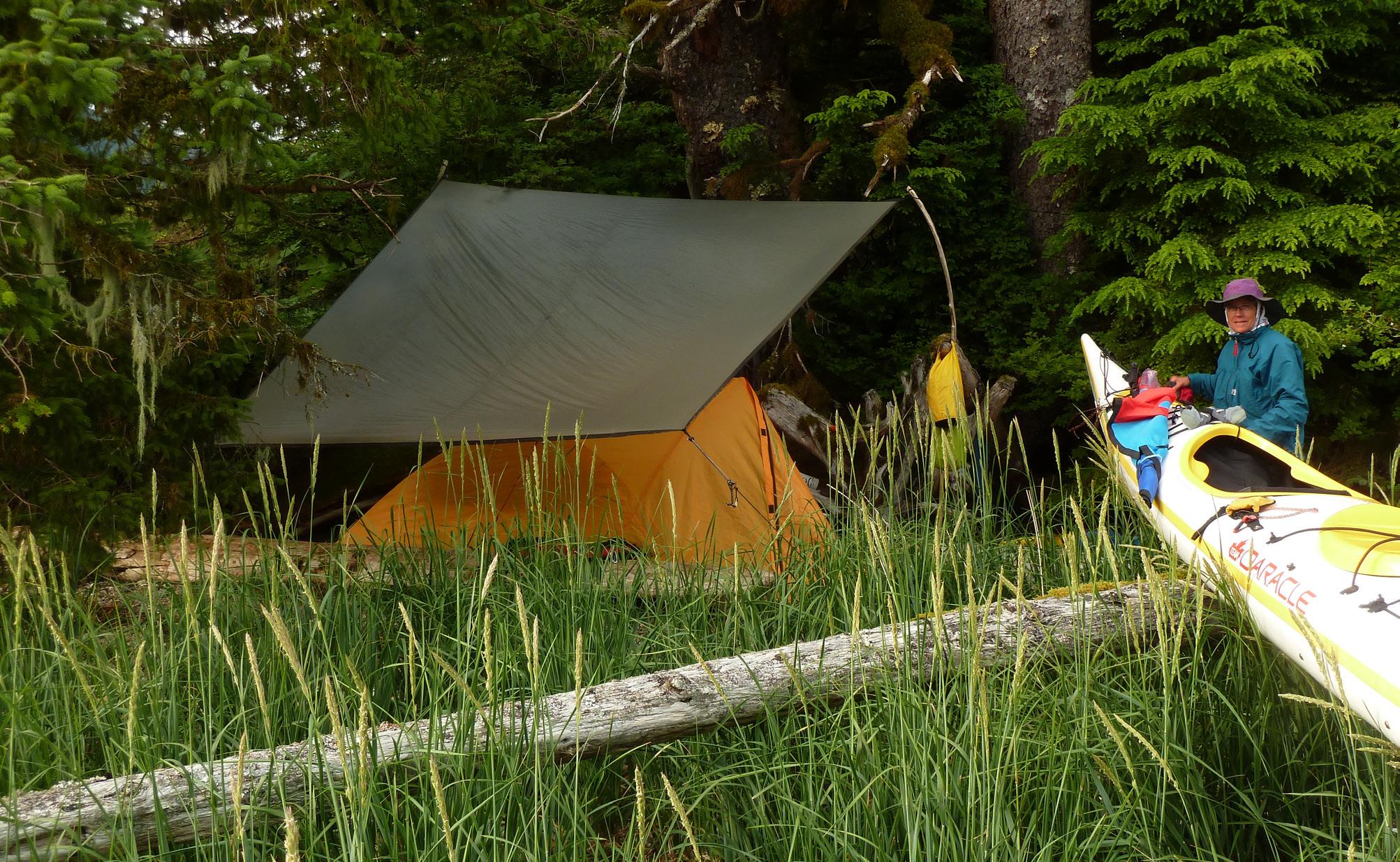
every evening, set up the tent, cook and secure the kayak—always keeping the tidal ranges in mind. Blowup mattresses and water-repellant down sleeping bags add to comfort. Every morning they rise early and the process is reversed—each setup and breakdown takes two hours. Then the hunt is on for favourable currents, for back eddies. Strong tidal currents in places like Johnstone Strait or Grenville Channel require careful shore hugging. Although two small solar panels charge the cellphones, they don’t listen to music while synchronizing their double-bladed paddles. “But,” says Janice, “Ian hums incessantly.”
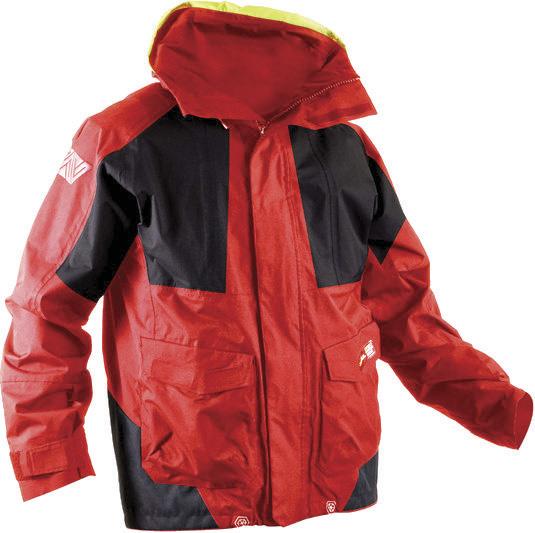
As R2AK is a race without supply drops or safety nets, detailed provi-


sioning is imperative. Ian isn’t sure on the number of calories burned while paddling, but says they snack all day on fruit bars, chocolate and energy bars. Instant coffee and teabags help with hydration. Freeze-dried chicken and other staples provide hot meals on their Jetboil camp stove.



WILL 2023’S R2AK make it six for Ian and five for Janice? Perhaps. They’re busy promoting their sales of Liteboat, a French-designed light, stable rowboat. They support R2AK and the Port Townsend’s Northwest Maritime Center and help some Europeans with the logistics of shipping their boats to the Pacific coast. They may provide advice on low-cost refitting of an inexpensive boat, making the R2AK more affordable.


They may join someone else’s sailboat.
When the pair reflect on lessons learned during their joint R2AKs, Janice thinks she’s become more flexible. “Over the years, I got used to everything being my way,” she said. “The races have taught me about partnership.”

“Decision making on the water, especially in risky conditions, should always build on the best of our collective experience and abilities,” Ian concluded. “In the process, we learn from each other and arrive at the best possible solution, with agreement, commitment and trust. Having rowed and paddled many challenging miles together, the process has become second nature and often few words need to be spoken.”



As Easy Goin’ swings on anchor, we are on deck enjoying the warm summer sun. Our imaginations are running wild speculating how Pirates Cove got its name. Located on De Courcy
AIsland and only accessible by boat, Pirates Cove is one of the most popular provincial marine parks in British Columbia’s Gulf Islands. Its name stimulates the imagination. One of the attractions to the park is a wooden treasure chest next to the park sign at the entrance to the cove. The treasure chest is always overflowing with toys, books and other goodies. The contents are free and are for the taking. Treasure hunters are expected to leave some treasure behind. A voyage to Pirates Cove is a summer highlight for
hundreds of young boating families. When approaching Pirates Cove, X really does mark the spot. Earlier in the morning, as we arrived, we guided Easy Goin’ clear of the rock reef extending beyond the natural breakwater that runs parallel to the shoreline. The reef extends well beyond the green day marker that marks the reef and is just awash at higher tides. In the summer, kelp helps mark the hazardous reef. Safe entrance into the cove is accomplished by passing the reef to port. You can do so by lining up the range
marker on shore—a white arrow on the rocks that points up at a wooden white X on a tree—and following this course until you are abeam of the entrance channel, at which point you turn 90 degrees to port. Enter the channel keeping the red buoy “U38” to starboard and the green day marker on the reef to port. On a zero tide the channel is about five feet deep and once in the cove there are depths from six to 10 feet. The large dock facility on the west side of the cove is private moorage for island residents. Park visitors are requested to stay clear of the float plane dock.
DESPITE HAVING A tricky entrance and questionable holding ground, this 31-hectare park remains very popular with boaters, many of whom insist the mud bottom is only about 10 to 12 inches thick over a rock substrate. Holding can be a problem in a northerly wind, although we have never had a problem. To accommodate the popularity of the anchorage, stern-tie rings are placed on the northern and southern rock shoreline.
When you go to weigh anchor, if your boat isn’t equipped with a raw water washdown, you’ll want to have a bucket and line handy. It’s been said, there is only one difference between “sticky” and “stinky” and this bottom checks off both boxes. You’ll want to rinse the rode as it comes aboard; you don’t want this gross goo in your chain locker.

Arlene and I consider the marine park lovely and its anchorage beautiful. It features two dinghy docks for going ashore, plenty of sculptured sandstone shoreline to explore by kayak and an intertidal area that teems with a variety of marine life. During the summer months, a park host is present to assist with questions or concerns.
The 77-acre park offers a lovely fivekilometre network of easy hiking trails that weave through the park and pass through mature second-growth
Lifelines, halyards, clutches and other efficient, new equipment. Check out the many advances in safety gear in stock. We replace old rigging and repaint masts efficiently.





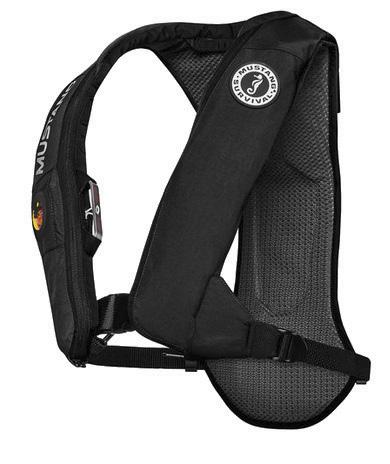



Home of the ‘Shoreline Reel’



Douglas fir, arbutus and Garry oak. Picnic tables and walk-in camp sites accommodate day and overnight plans, but there’s no garbage collection service, so visitors must pack-out all garbage for recycling or disposal.
In 1966, the parks grounds were acquired for the purpose of a Marine Provincial Park with the assistance of the Council of British Columbia Yacht Clubs.


The park’s earliest history was as a summer fishing and trading site for First Nations people. Middens in the park, protected under law, date back over 3,000 years, with the largest hidden beneath the present-day campground.
A PIRATE OF a different kind lived here in the late 1920s and early ’30s. A remarkable figure in the history of

British Columbia, Brother XII (aka Edward A. Wilson, among other names) was a mysterious cult leader who formed the Aquarian Foundation and convinced nearly 8,000 followers that he was the Twelfth Master of Wisdom from another world who would teach his faithful the mysteries of ancient Egypt and usher in a new age. The amount of money donated to the foundation is legendary; people would give their entire life savings in support. A key commune property was located on De Courcy Island, a haven in advance of a predicted Armageddon.
Regardless of Wilson’s intentions in the beginning, over time the spiritual component went astray and a series of court cases provided insight into the commune’s financial, and, yes, sexual scandals, which included the role of a whip-wielding Madame Zee. Eventually, Brother XII and his mistress fled. Where he lived out his days and when he died remains a mystery, but witnesses told tales of glass jars filled with gold coins—the proceeds of donations to the foundation—stored in cedar chests. Though the pair escaped, speculation was they couldn’t have taken all the gold, meaning perhaps some is still buried somewhere in the park.
We always keep our eyes peeled when walking the park’s trails. You never know when you might be lucky enough to discover a jar full of gold coins, or even better, stub your toe on a cedar treasure chest full of booty.
WHE N YO U GO

Location: 49.06’01” N, 123.43’55” W
Chart: 3475, 3343, 3313
Nearest Marina: Page’s Resort & Marina






EEntering the North Pacific Cannery National Historic Site—a collection of wood-walled, tin-roofed buildings spread along the tidal bank of the Skeena River and connected by a series of boardwalks—is like stepping into a time machine. Although salmon canning at this site, just south of the village of Port Edward and about 16 miles south of Prince Rupert, ended years ago, history lives on.
The cannery is one of the oldest in the province and was a key part of the early development of Prince Rupert, today the third largest port in Canada and bustling with boats. Salmon are a vital resource in British Columbia and continue to be of great importance to Indigenous peoples.


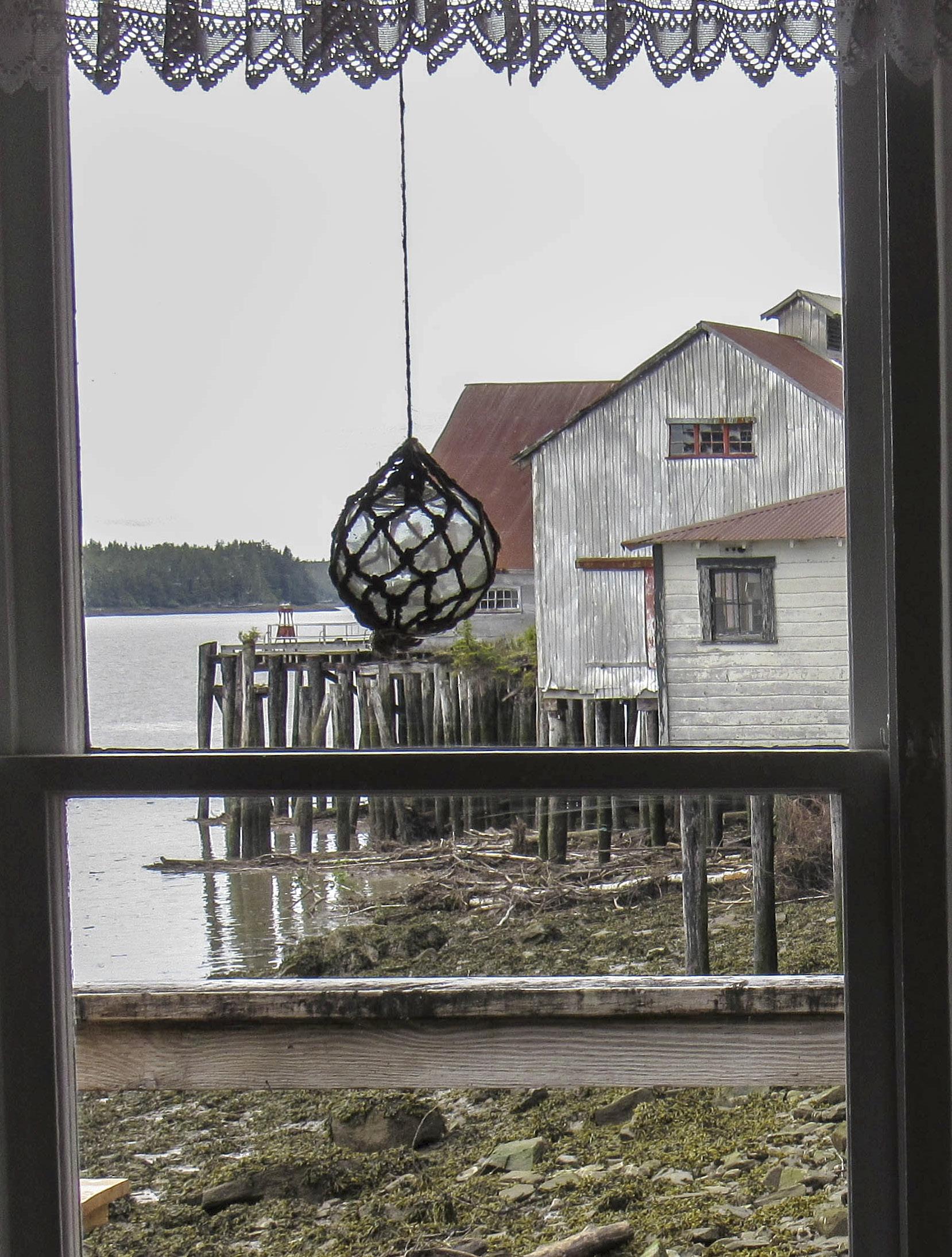
Our guide, Lola, explained how in 1888, the North Pacific Cannery Company was formed, and in 1889 a salmon-processing plant was built on 183 acres of land, purchased for $32. The cannery occupied a strategic spot in the Skeena River estuary along what became known as Cannery Row, sheltered from the open ocean but with easy access to the rich fishing grounds of BC’s North Coast.
In 1892, the Anglo-British Columbia Packing Company (ABC Company) purchased the North Pacific Cannery (NPC). By the mid 1890s, the company was the foremost packer of sockeye salmon in the world. At one time, about 200 canneries existed along Canada’s West Coast with more than 50 in the Prince Rupert area.
PRIMARILY BECAUSE OF physical isolation, northern canneries had to be self-sufficient communities that included housing for employees, who would live on site through the season. Canneries also had to be built near the fishing grounds so the catch could be processed quickly to prevent spoilage in the days before refrigeration.
As we strolled along the boardwalk, I noticed that almost all the buildings stood on stilts. Lola explained this was because the tide waters could rise as high as 26 feet twice a day. Workers stayed in clapboard bunkhouses and triplexes, while officials had their own cabins. Some First Nations workers brought their whole families to the area. There was a mess house and restaurant, a wash house and a store that also doubled as the community centre.

In 1892, when ABC Company took over the plant, it was a one-line cannery with two rooms for mild cured fish. A cold storage plant was added in 1910 but it closed in 1920 and was dismantled in 1954. A can-making factory was built at the site in 1918, and until 1936 it made and supplied cans for other canneries in the area. By 1923 the cannery had expanded to a 26,000-square-foot, two-line operation, with cold storage and a blacksmith shop.

The size of the workforce varied, with about 600 workers at the beginning and nearly 1,000 at its peak in the early 1950s. Although only 29 buildings remain today, at one time the cannery consisted of more than 130 buildings.
CHINESE, FIRST NATIONS and Japanese workers were often segregated at the cannery and in their bunkhouses. Japanese did the fishing and net mending, First Nations fished and worked

on the cannery line, while Chinese did the cooking, and in the early days butchered the fish and made the cans by hand. Europeans managed the company and also fished. Women performed tasks including fish cleaning and washing, often at a lower wage. First Nations women were net-women and butchers, and later worked with the mechanical fish-processing machinery.
Lola explained the process started by catching salmon using boats and seine nets. Next was the unloading of the fish, followed by sorting and weighing. The canning line was dependent on when the boats would arrive and workers often had to wake up in the middle of the night and work random hours allowing for best preservation of the salmon.
Then the fish were killed and washed. The heads along with the fins and tails were removed. The workers on this line were known as the “singing knives” because they were so efficient (one fish in 10 to 15 seconds).
In the early days, all the labour was done by hand. In the early 1900s, mechanical advancements came to the canning industry. A gang-knife machine, an “iron butcher” and can soldering machines were installed. The iron butchering machine, patented in 1905, could cut and clean a salmon in about one second. Previously an experienced butcher could cut the head off, open up the belly and take off the fins at four to five fish a minute. Lola explained, “Technology improved efficiency but at a human price.” Each “iron butcher,” for example, eliminated about 27 jobs out of a 30 member team.
The Grand Trunk Pacific Railway (later the Canadian National Railway) was completed in 1914 passing through the NPC property. Linking to transcontinental service, the railway improved the plant’s ability to ship canned salmon to international markets and gave the NPC an advantage over other canneries.
Later, automatic filling machines filled cans with fish at more than 100 cans per minute. Whole cleaned salmon could be directly fed into the machines and rotating gang knives would cut the salmon into the correct lengths to fit the various sized cans. The sanitary can machine was another major innovation because it sealed cans of fish without solder. Other machines invented included filling, salting, weighing and sealing machines. These machines greatly increased the efficiency of production and profitability but reduced the amount of labour required, resulting in the loss of many jobs.
The workers at NPC faced tough conditions with cold being a major issue. The fish were kept in ice-cold water-holding tanks into which the workers had to reach in up to their elbows. Also, the buildings were built over the water, allowing cool air to seep through the large slits in the floor. The slits allowed fish guts to be easily washed from the floor into the ocean. Furthermore, toilets were built over the water. “I can’t imagine what the stench was like,” grimaced Lola.
Leading us along the cutting and packing line, Lola described the hard-working conditions including long hours, child labour and poor safety. A scream of pain often resounded, she said, as a finger was chopped by a sharp knife or machine, followed by frantic searching for the lost digit before it got canned.
Once filled, the cans were wheeled into large steam ovens to cook for about 90 minutes. The cannery produced tins of pink, chum, sockeye and coho salmon for Clover Leaf, Red Rose and Queen Charlotte brands. Up to one million cans was produced in the early 1900s.
LIFE AT THE cannery wasn’t all miserable. It was also a happy place. Standing on the steps of the Rail-
man’s House, Lola explained how her grandmother, Arlene, arrived at age three and lived in this house for 10 years. Her father, a Norwegian, was a boat builder and fisherman. Arlene visited recently and remarked how when she lived here she wasn’t allow outside during high tide because there were few railings and she couldn’t swim. She is still friends with some of the Japanese she met then and continues to make rice the way they taught her.
ABC owned and operated North Pacific Cannery until 1968, the last full season of salmon canning, when the company was folded and its assets sold
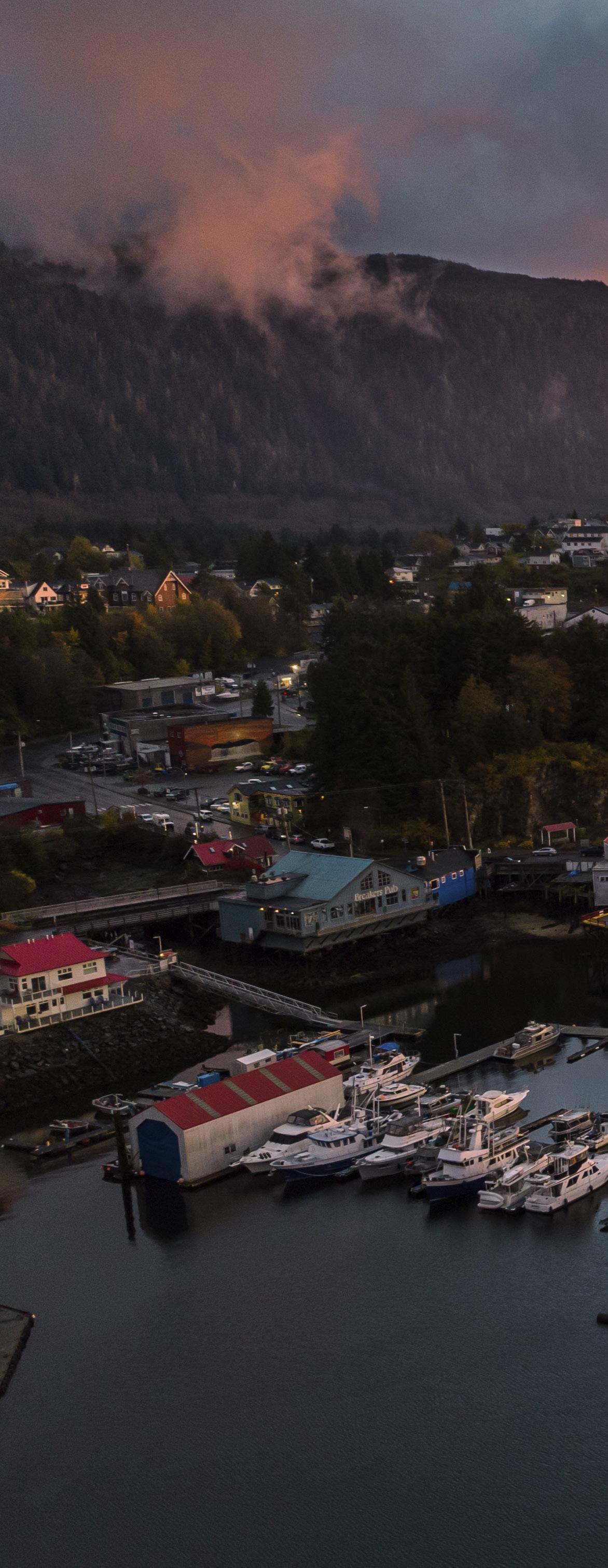
off. NPC’s history is unique because of its almost continuous ownership by a single firm for more than 76 years. North Pacific Cannery was purchased by Canadian Fishing Co. in 1968 and re-opened for a partial season in 1972. The site continued to operate as a maintenance and reduction facility for the fishing fleet in Prince Rupert until 1981, when it closed permanently.
THE CANNERY WAS established at a time when salmon were considered inexhaustible, a limitless source of economic growth and wealth. Enormous optimism reigned and frenetic efforts were made to grow the can-

nery. But mechanization killed jobs and then the numbers of salmon started to decrease. After many decades, Lola explained, the NPC finally closed. And soon after, the last cannery in Prince Rupert closed.
In 1985, the Port Edward Historical Society, an organization of local historians, saved the site, paving the way for today’s museum, a rustic and evocative place whose historic buildings are filled with artifacts from a time gone by. In 1985, it was granted a National Historic Site designation. Today, it offers a glorious window into the past and is one of the major tourism attractions on BC’s North Coast.
The closest marina is Port Edward Harbour Authority’s Porpoise Harbour Marina Complex, located in Porpoise Harbour. The marina is well protected though you may be sharing space with the commercial and recreational fishing fleets. There is space for about 250 boats here up to 60 metres long and the docks are supplied with power and water. At the head of the ramp you’ll find vessel repair facilities as well as washrooms, shower facilities and a “coin operated” laundry facility. It’s seven kilometres from Port Edward to the cannery site. Contact the cannery to arrange shuttle transportation to and from the museum site. For more information on marinas in the area go to peharbourauthority. com.
The cannery, open from May to October, features a gift shop and a model train set. The historic Mess House offers home-made salmon chowder. Find out more about the cannery at northpacificcannery.ca. While at the NPC you can view bald eagles, seals and blue herons, while enjoying local marine activity including crabbing boats, gillnetters, barges, yachts and the occasional cruise ship. For information about tourism check out visitprincerupert.com.


“One Man, One Canoe, One Country”Bert pulled the canoe upstream on the muddy, low Columbia River for 80 kilometres.
Three strokes to starboard. Three strokes to port. That’s how Bert TerHart, 63, paddled his canoe, Kai Nani, across Canada’s rivers, lakes and canals, starting from Gilbert Beach in Steveston, BC, to the Big Shippegan Lighthouse in New Brunswick. “You establish a rhythm of 70 to 80 strokes per minute and with those three alternating strokes, I had the least amount of yaw,” said TerHart. “Paddling an average of 17,000 strokes a day, I didn’t want to increase the distance by zigzagging. In flat water and no wind, I could cover six-to-seven kilometres an hour.”
Along with paddling for roughly 6,600 kilometres, he portaged his canoe for about 200 kilometres and towed it on a two-wheeled cart between waterways for at least another 1,000 kilometres, for a total trek of 7,800 kilometres. Billing his voyage as “One Man, One Canoe, One Country,” he left on April 1, 2022, and arrived on October 1, completing the voyage in exactly six months—or 183 days.
In his early planning, TerHart figured he’d be stuck by weather one day in 20, that one day in 10 would be suboptimal, and that he’d take one day off every 30 days in the trip. He soon learned, however, that he had to make progress every day, come what may. “I ended up with no days off,” he said. “To keep going at an average pace of 40 kilometres a day, some days I had to cover 50 kilo -
Tmetres. It’s a lot like sailing. Sometimes you go at a pace of six or six-and-a-half knots, other days four knots is tops. To make up for slower days, you go as fast and far as you can when the conditions are favourable.
“I’d given myself a 50 percent chance of completing the voyage,” TerHart continued. “I was very lucky with the weather. I could’ve been pinned down in the Great Lakes or the St. Lawrence.”
TERHART’S CANADIAN CANOE crossing wasn’t his first adventure. A life-long sailor, he’d ventured north as far as the Bering Sea, then single-handed his 45-foot OCY sloop, Seaburban, around the globe, leaving Victoria in October 2019, and passing the five great southern capes going east. His goal was to emulate solo navigators who travelled half a century or more ago—without electronic charts or GPS, using only a sextant, paper charts, a pencil and log tables (PY, January 2021). He successfully completed the circumnavigation in 265 days, having sailed 28,820 miles.
I met him at his father’s Victoria home. Jan TerHart, a sturdy 95-yearold Dutch immigrant who still lives alone, has bequeathed his strong genes to his son, who looks like one lean, long sinew after his half-year workout.
I asked TerHart the question he’s heard at least 100 times. “What motivated you to travel the width of Canada by canoe?” His answer is by now wellrehearsed: “I’m a proud Canadian and wanted to follow in the footsteps of the Indigenous peoples, the explorers, cartographers and voyageurs who
preceded us across this vast country. And to try to replicate their methods of navigation—no electronic aids, no GPS, only a Cassens and Plath Ultra sextant, an artificial horizon and a compass. I wanted to travel like Champlain, Fidler, Turnor, Thompson, MacKenzie, Hearne, Fraser and the others who mapped Canada. I wanted to try to get some understanding of what it was like to endure some of the things they had to endure.”
TerHart emphasizes that Indigenous peoples had honed their expertise of river and lake systems for thousands of years—without that repository of knowledge, those who formally mapped Canada would have had great difficulty succeeding. It’s that crosscultural collaboration that led to successful exploration and cartography.
PREPARATION FOR THE voyage was extensive. TerHart applied his experience as a former Canadian Special Operations Forces Command soldier responsible for “making everything work” to plan his adventure in detail. First, he had to create a route across the continent that would be safe, minimize portage and reduce the personal towing of the canoe on a two-
1. In the N. Saskatchewan River. Bert sailed whenever possible which cut seven days off the trip. 2. Bert at the end of his six-month paddle. 3. A PVC riser Bert built keeps water off the deck. A mirror and compass help with navigation.



wheeled cart over roads and through rough terrain.
He perused the maps drawn by the early explorers. “Some of their maps were pure fantasy,” he said. “Peter Pond, for example, never travelled beyond the Athabasca region but he drew fictional maps to the Arctic.” But by the end of the 18th century, explorer and fur trader David Thompson’s maps were very accurate. He, too, used a sextant to find his position.
“I created one strip chart across Canada,” he continued. “And since the maps and charts from Google’s satellite pictures aren’t always accurate and maps of the terrain I covered weren’t uniformly available, I used software to create my own maps from Canadian topographic data.”
I wondered whether his route would roughly follow the Trans-Canada Highway. By comparing the two itineraries, it’s clear that the Trans-Canada is considerably straighter than the waterways TerHart had to follow—his paddling route, especially through the Rocky Mountains, Alberta and Saskatchewan skewed farther north following the rivers coursing through the vast Canadian landscape.

TerHart considered his six-week trip through BC the most physically gruelling. “I paddled a series of connected rivers, of which only two days were downstream,” he said. “I started with the upstream Fraser watershed, then the Similkameen watershed, followed by the Okanagan River and eventually entered the Columbia.” Along the way, he towed the canoe and its contents—about 200 pounds—for roughly 650 kilometres. “Everything seemed ‘uphill’ through British Columbia,” he said.
As it was April, he encountered snow and sleet. It was only when he reached the Saskatchewan River near the Alberta border that things improved. “The Saskatchewan touches a good part of Canada,” he said. “It reaches to Winnipeg, or Lake Winnipeg, a choice made by the weather.”
CHOOSING THE RIGHT canoe was crucial, with durability and weight being the major considerations. TerHart tested several and ended up with a 16-footer he called Kai Nani—a Polynesian term meaning “harmony between wind and water.” The Quetico model is manufactured by Souris River Canoes, in Atikokan, Ontario, a small town that proclaims itself as the “Canoeing Capital of the World.”
The canoe is not completely open to the elements. TerHart selected a spray deck with a single opening at the seat, as well as a zippered cargo hatch. Custom-made by North Water in Vancouver, the 1,000D PVC coated polyester spray deck loops 2.5 inches over the canoe’s gunwales, and adds a pocket for a spare paddle. It certainly keeps waves from sloshing over the bow but doesn’t keep out all rain. “There were times during heavy downpours I had to bail,” said TerHart.
His towing harness is made by Ski Pulk; TerHart significantly modified the harness so that it included six points of adjustment to minimize stress on his body.
The paddles he used for up to 14 hours a day were almost as important as the canoe. He trained with seven custom-made paddles testing for lengths and shapes that would best suit his arms and fitness level.
The straight paddles ranged from 61 to 62.5 inches and were built by wellknown custom paddle maker Bruce Smith in Fergus, Ontario. The bent, spiralled paddles TerHart used most, measuring 52 to 54 inches, were constructed by the XY Company, also located in Atikokan, Ontario.
WHAT TO WEAR for both winter and summer while paddling? The most important thing was to stay dry and warm. “Getting wet in the cold is very difficult and can lead to hypothermia,” TerHart said. “So I spent money on the outdoor clothing made by California-based KUIU. I had to wear the right things while paddling or walking
as I never had a place to dry clothes. So even during downpours when I had to bail two or three gallons out of the canoe, I’d still be dry…”
During the summer heat, he always wore a hat and was religious about using sunscreen, especially on his ears.
Always looking for efficiency, TerHart added a sail to his canoe using a completely collapsible rig and sailing whenever possible,. “I used short sections of carbon fibre tubing as mast,” he explained in an email. “I customized the sheeting arrangements including being able to reef the sail from my seat. I could sail from 60 to 180 degrees in winds to 15 knots. Top
speeds when surfing down waves were above seven knots while average sailing speeds were easily above five knots. I sailed on anything I could paddle on, including through rapids. Sailing saved me at least seven days.”
His towing cart, which TerHart nicknamed “Karta,” weighed a hefty 36 pounds, but like all his curated equipment, it was essential. TerHart towed the canoe and its contents along roads and through woods where sometimes he had to hack his way through dense underbrush with an axe and bucksaw. The Seattle Sports All Terrain Kayak/ Canoe cart is rated at 300-pound capacity, folds and stores in a bag.
FINDING CAMPSITES WAS one of his greatest challenges. High banks, rocky embankments, muddy shores and private property restrictions could prevent him from finding a safe place to sleep. Many of the earlier Indigenous settlements that might have welcomed him had disappeared over time, but some remained. “I was well received by Indigenous folks and they were pleased that someone was following the explorer routes,” he said. “I was always allowed to camp on reserve land, offered help, food and rides.”
Locations could be deceptive. One day he pulled up at someone’s property and walked to the house to ask
permission to put up his tent. “No one was home,” said TerHart. “I decided to pitch the tent anyway. A guy shows up later in an ATV. I introduce myself and my mission. He’s leery, can’t see the canoe and I’m a stranger in weird clothes in the middle of nowhere. If you travel alone, people wonder if you’re a sociopath. He goes inside, returns and has switched from leery to welcoming. His wife has googled me. He comes back with food and offers a shower. I stay the night in my tent. Just one of many great experiences.”

TO FIND THE right tent, TerHart bought five and tried them out at his home on Gabriola Island. He chose the X-Mid Pro two-person tent made by Durston, a company that sells ultralight tents and backpacks—his tent weighed a mere 800 grams (“I have jeans that weigh more,” TerHart joked). He described the tent as his refuge.
In a Facebook post, he wrote: Rain or shine, every day ended the same way. Exhausted and soaked in sweat… as soon as I stopped, I’d begin to cool down. Always the first order of business was shelter. Pitch the tent immediately to retain what warmth was left of the last hours’ efforts, escape the inevitable cloud of mosquitoes and black flies, or beat the rain.
BUGS, INCLUDING MOSQUITOS, black flies and horseflies were constant, attacking relentlessly despite his wearing bug-resistant gear. “Fortunately, I’m immune to them and my body doesn’t react to bites,” he said. He also saw much wildlife. “Cougars, bears, caribou, every kind of deer, coyotes, raccoons, river otters, beavers everywhere. Geese, of course, and swans, ducks, even pelicans.”
Taking in enough food, especially protein, was essential. TerHart estimates he burned about 7,000 calories a day. He’d brought 20 days’ worth of sustenance not knowing where he’d find food along the way. Oatmeal,
pasta, dried meat, bread, energy bars and tomato sauce were staples.
Not wanting to add the weight of bottled water, he’d invested in a water filter which kept him hydrated. He used microfibre cloths and no-rinse soap to keep clean. He charged his iPhone with a battery that was charged in turn by a 20-watt solar panel fixed onto the canoe’s stern.

TerHart usually launched his day around 04:00. He says he was shocked at the workload of moving every day and that it was mentally exhausting too. “There’s no relaxing evening with a movie or Netflix, no weekends off. You have to move, no matter what, for 12 to 14 hours and then you still wonder, ‘should I have gone further? Will the weather throw me a curve?’ And you’re on your own, not lonely, but alone. No one to bounce ideas off, no one to help you decide the right course.”
When he reached the mighty St. Lawrence River, he was astonished that as far up-river as l’Île d’Orléans, the tide reached 18 feet. With the ebb and wind at his back, his speed-over-the-ground increased markedly—paddling against the tidal currents was impossible.
On his first day paddling the St. Lawrence, as TerHart recounted on his blog, he’d spied a breakwater about four kilometres ahead. The tide was low and he was separated from the shoreline by wide mudflats. As the tide turned to flood, a wind suddenly rose and TerHart got stuck in a mudbank. “Two hours and nine round trips to the riverbank was an experience I was determined not to repeat,” he blogged. Knowing he had two daily opportunities to move downstream on the ebb, he adapted his schedule, leaving early and paddling as hard as he could between man-made river-side structures like quays and ferry crossings.
EVER CLOSER TO touching the Atlantic Ocean, TerHart’s discipline and persistence carried him to Campbellton, New Brunswick by September
19 and to Bathhurst four days later, where he experienced some of Hurricane Fiona’s left-over power. When he placed his hand on the peeling white paint of the Big Shippegan Light, he was greeted by his brother Jan, and sisters Stella and Leah. No fanfare, no fuss, no press.

Since that marvelous day of arrival, October 1, TerHart has reflected on his intrepid voyage, on the hardships and the kind people he met along the way. On their stories and their gifts, which he says, “brought him to his knees.” He’s wondered whether these six months have changed him—he believes he’s a better Bert, but fundamentally remains Bert nonetheless. On Facebook, he pondered, “How one comes to gamble their life on a couple of litres of epoxy and a few gossamer strips of cloth I know not. I did, and I can’t.”
HE PLANS TO write a book about his Canadian crossing, and another sailing trip is playing in the back of his mind. A group of eight uninhabited volcanic islands, the Islands of Four Mountains, in the Aleutians may need exploration…




A cruise to Princess Louisa Inlet’s Chatterbox Falls nearly ends in catastrophe
 By Wendy Hinman
By Wendy Hinman
BEFORE HIKING, WE grinned next to a big yellow sign that read:
“Caution: Access to Trapper’s Cabin. This route is not maintained or signed. It is strenuous and potentially hazardous. The hike to the cabin (elevation 550 metres) is about two hours one way.”
It would be tough, but we were avid hikers, eager to tackle the steep trail.
My husband Garth and I planned a three-week cruise in BC with catamaran owners Laura and Brian. During our second week, friends Jim and Debbie joined us in Nanaimo. It was late October, so we urged them to bring warm clothes and be ready for an adventure.
Then news warned of a “bomb cyclone”: A forecasted atmospheric river could intensify into what’s also known as a winter hurricane. We studied the Windy weather app and zipped across the Strait of Georgia when winds were light. Our goal was the protected, cathedrallike setting of Princess Louisa Inlet—miles from anywhere. Reaching it requires winding nonstop up a long fjord and navigating through Malibu Rapids during slack water. Princess Louisa’s mile-high cliffs, peaceful setting and gushing waterfall attract many ambitious boaters each year. The Waggoner Cruising Guide describes it as the “Holy Grail” for cruisers, and even after 34,000 miles

of offshore cruising, it remains a favourite place of mine. During a typical summer, dozens of boats line the floating dock or tie among a slew of mooring balls. In late October, we had it to ourselves. Even the Malibu Club Young Life Camp appeared deserted. Mist clinging to the mountains and waterfalls streaming down the fjord’s granite walls awed us the afternoon we motored in.
BY MORNING IT was dry, so we discussed hiking the rugged trail to the trapper’s cabin. Though it was my third visit, the ominous warnings had previously deterred me from hiking it.
After breakfast, we got distracted testing a new drone to capture video of Chatterbox Falls. I prepared pumpkin soup for a hearty post-hike dinner. Then as the others installed a new outboard engine battery, I took a short solo kayak paddle to the roaring falls. When I returned, everyone was eating lunch and talking about the hike. I was surprised everyone still wanted to go.
I donned layers of foul weather clothes and stuffed my feet into wool socks and boots, loading my waterproof backpack with a water bottle and extra clothes. Earning my nickname, “travelling squirrel,” I also threw in snack bars, almonds, my cell phone, a flashlight and tissues.
We began hiking at 13:00 and Garth noted we should turn around by 15:30 to make it down before dark.
“We have no cell service, no VHF signal, and we’re alone, so if we run into problems, no one will rescue us,” I added.
Brian concurred, “We’re not trying to prove anything here. If anyone wants to turn around, we’ll all turn around.”
WE STARTED UP the trail, grabbing onto tree roots and branches, stepping through dips carved by water. It was tricky but exhilarating. Sometimes we couldn’t see the trail, then spotted a pink ribbon to reassure us. Mostly the trail went straight uphill like a ladder. We scrambled up mossy rock outcroppings, sidestepping fallen trees—every obstacle a potential handhold. We grew overheated and peeled off layers, tying them around our waists or stuffing them into our packs. The brilliant green of the dripping moss and fresh scent of evergreens filled our senses.
“What an amazing hike!” Jim said. “Nothing like home.” Jim and Deb brought warm clothes, ski gloves and hats they rarely needed in Southern California. Only Garth and I wore full foul weather gear and boots, while everyone else wore rain resistant coats and pants with sneakers. Warm from our exertions, we guzzled water, then re-
filled our bottles in an icy stream. Adrenaline and excitement fueled us onward.
ABOUT TWO-THIRDS of the way up, at a steep stretch where a split tree had fallen across the path, Laura said, “This might be a good place to turn around.”
Garth looked at his watch. “We’ve been climbing for an hour and a half. We’ll need to turn around in about 45 minutes anyway.” I shrugged. After a brief pause, we used the split tree to pull ourselves up the rock face, hurrying to catch the others.
Increasing rain dampened my enthusiasm. There was no hint the trail would level out, nor any indication of an impending view. Only Garth’s neon jacket seemed visible through the foliage.

“What time is it?” I asked Garth, pausing to gulp water and catch my breath.
“15:08.”
“Hmm,” I said. “I’m concerned about getting down before dark. If we have problems, we may need extra time.” Garth nodded. I was also worried about hypothermia, since I was already cold and I had on more clothes than anyone.
After a moment, I surrendered to my misgivings. “I hate to be Nervous Nellie, but we don’t have much light left and it might take a while to get down. Let’s turn around.”
“We’re heading down!” Garth shouted toward the others.
We heard a distant “OK!” Garth and I turned and heard scrambling behind us.
When Jim and Deb caught up, Jim said, “Brian thought they were nearly at the trapper’s cabin and wanted to push on a few minutes to see if they could see it.”
I felt uneasy. I’d turned around, hoping everyone would.
WE LATER LEARNED that Brian and Laura made it to the trapper’s cabin ruins alongside a waterfall where only a few logs and bedsprings remained. They stayed a minute, took pictures and turned around. Wet and cold, they hurried to stay warm and catch the rest of us. That’s when Laura slipped on a wet root and tumbled. She slid headfirst down solid a granite face, and 40 feet past Brian she skidded to a stop in a tangle of brush. She cried in pain as Brian helped her up. He later reported that she’d been panting, saying it felt like a heart attack, a broken rib or a punctured lung.
At 15:50, Brian reported via walkie-talkie that Laura had fallen but could walk. Jim climbed back up to help. I remembered a sign at the base of the falls noting lost lives. If only we had turned around sooner…

Garth, Deb and I shivered as the rain intensified. Donning more clothes, we discussed what to do. Could we even help Laura? We could only hear static through the radio,
so we followed Jim back up the trail. Turning around meant we’d likely be on the mountain after dark.
WHEN WE REACHED Laura, I pulled my neck gator over her head to help keep her warm. Laura shuddered and moaned with each breath, her eyes unfocused. As steep and narrow as it was, I wasn’t sure how we’d carry her, but clearly we had no choice but to get her off the mountain as quickly and safely as we could. Fortunately, her legs weren’t injured and she could walk.
Brian said. “I know it hurts, baby, but you could die up here if you stop. You need to do this.” Laura nodded and we helped her stand.
Though we still had daylight, most of our descent would be in the dark. Besides my flashlight, only Laura had a headlamp. Each carried a cell phone we could use if necessary, though in the rain they’d be unlikely to last.
Jim suggested he and Deb hurry down to grab flashlights while there was still light to see by. We agreed and they raced off.
The rest of us picked our way, single file, down the mountain, limited by Laura’s injuries and pain. As darkness fell, our progress slowed. I scouted for trail markers and decent footing while Brian and Garth supported Laura through each painful step. Her breath was laboured and she moaned softly. We offered encouragement but because the incident happened near the top, it was a long way down.
Rain pounded and water flooded the trail. We plodded through frigid, shinhigh water that spilled over my boot tops and soaked my socks. Water rushed over bare logs, rendering them slicker than the mossy rocks. Pebble-strewn gullies we’d followed uphill were now raging creeks. Landmarks reminded us how far we still had to go—harsh reminders of our earlier naiveté.
Laura’s headlamp failed and we relied on Brian’s cell phone. After hours, I spotted a glow—Jim returning with flashlights. The time it took him to return indicated the distance yet to cover. It seemed endless as we slogged onward.
We finally reached the boat at 20:30,
long after dark; we’d spent eight hours on the trail, five after Laura’s injury. Everyone was exhausted and soaked to the skin with cold October rain. Brian helped Laura out of her wet clothes and gave her something for the pain. We debated options. Being unfamiliar with area medical facilities made decision-making difficult and we still had no cell or VHF signal to contact the outside world.
WE LEFT PRINCESS Louisa at daylight, when we could safely get through the rapids. Once we had a cell signal we made calls and Laura’s son alerted the Coast Guard as we navigated toward civilization.
Flight logistics and weather added to our stress. Deb and Jim were scheduled to fly home from Powell River the following morning, but the harbourmaster at Powell River confirmed our fears that getting there would be impossible because a gale raged in the Strait of Georgia.
“The ferries have all been cancelled and this port isn’t safe at the moment,” she said. “Go to Pender Harbour. There’s a hospital in Sechelt, a half hour by road from there.”
Shortly after we reached Pender Harbour’s Madeira Park, EMTs sent by the Coast Guard came aboard and assessed Laura’s condition, which led us to think she could wait until dawn to visit the hospital.

When Laura finally received a thorough assessment 36 hours after the accident, X-rays and CT scans showed that she had three broken ribs, a broken sternum, two punctured lungs, and a fracture offset in her spine (T4 /T3). For the care she needed, she was transferred to Lions Gate Hospital in North Vancouver. Yet because of the pandemic, Laura was trapped on a gurney in a hallway for nearly seven hours. Another test later uncovered a fracture in the C1/C2 area of her spine as well. A sobering diagnosis.
SEVEN DAYS AFTER her accident, Laura finally made it home wearing a neck brace. She survived, but recovery required months of healing and possibly a spinal fusion. We’ll never stop thinking about how close Laura came to irreversible injuries. Clearly, it was foolish to undertake such a challenging hike in cold, wet weather late in the day
in an isolated area. We compounded our mistake by not turning around when some of us expressed misgivings. I am haunted by the naïve photo of us smiling next to the caution sign.
It’s an adventure none of us will ever forget—or want to repeat.
• Before any trip note the closest hospital or medical centre.
• Allow sufficient time for any journey and turn around when conditions dictate.
• Dress appropriately for the weather and activity, including footwear.
• Make sure everyone is visible and carries a flashlight, preferably a headlamp.
• Carefully evaluate someone who’s been hurt for injuries that may not be visible.
• Carry a device that communicates with satellites, such as Garmin InReach or Zoleo phones
• Invest in evacuation insurance, such as DAN, Airlift Northwest or LifeFlight.


















New cushions can improve your boat’s appearance and make it more liveable, too.

When my husband Evan and I were buying our first boat, a then 20-year-old Fortune 30, we sat down at the settee to sign the documents and quickly realized something wasn’t going to work. For me, it was the ugly colour of the scratchy fabric. For Evan it was the fact he was bottoming out on the—who-knowshow-old and I think they might smell a bit funky—cushions.
Happily, Evan’s parents are generous people and as a fantastic boat-warming gift we were given new settee cushions. But, being fairly new to the whole cushion-making process, the only decisions we made were about the colour and design (comfortable, washable fabric with a pattern to hide stains). Beyond that, the materials (fabric, thread, zippers, foam, batting) were selected by the upholsterer.
The cushions were lovely—but it turned out they were better suited to a lightly used cabin or weekend boat— not a liveaboard. The zippers needed replacing after a year, the fabric was too
Wlightweight and tore within two years, and the foam broke down within three.
Fast forward to our current boat life; we now share co-op boats with dozens of other members. While we want the boats to look nice, when it comes time for new cushions our goals are clear: we opt for dense, long-lasting foam and durable, but affordable, fabric covers that can stand up to frequent use.

Fortunately, a few things have changed since we had our first cushions made. Modern marine fabrics, with their increased durability and stain-resistant qualities, now come in an incredible range of colours, patterns and textures. And new types and combinations of foam offer everything from high-density foams with antimicrobial treatments (to inhibit mold and mildew), to ecofriendly natural latex, to easily recyclable foam.
If your cushions are more than 10 to 15 years old, it’s probably worth choosing new foam and getting a fresh start. If you are not sure, take the cushion out of its cover and let it air out. If it smells musty, has mold or is starting to degrade, you’ll probably want new foam.
When it comes to replacing the cushions, you have a lot of options. You can go with a DIY effort and have your
foam cut locally and then sew your own covers; opt for mail order service where you do all your own measurements; or hire a full-service upholsterer.

No matter which route you go you need ask yourself a few questions: Do you need high-quality foam that will stand up to frequent use, or will something less expensive work? Is the fabric going to see years of hard use with kids and pets, or summer weekend wear only? Are you refitting the boat for a long cruise, or are you sprucing up the boat before selling it? Do you like the style of your existing cushions, or are they ill-fitting and uncomfortable?
Fabric Tip:
If you are planning to sell your boat in the foreseeable future, choose a “saleable” fabric colour such as blue or neutral beige.




Foam The most common materials for interior foam are polyurethane and latex. Outside the cabin, you’ll find open-cell, fast dry foams that water can flow through or closed-cell foams which



don’t absorb water but can be very firm (and may also float). Most foam companies have their own proprietary names for foam so it can be a bit hard to compare prices—for example the Foam Shop sells the Quickdri Series, a medium-firm foam that doesn’t absorb moisture while the Foam Factory sells Dryfast foam.
Once you decide on a type of foam, you’ll want to look at density and compression. This often translates as firmness and is often listed as pounds per cubic inch (densities for boat cushions are often 1.4 to 1.8). But density also affects how long the foam will last. Higher density foams can go through more cycles of compression (meaning you can sit down or sleep on it more times before it starts to break down). But since really firm, long-lasting foam may not be super comfortable, you might want to consider having softer foam or memory foam glued on to create more of a pillowy feel.
Most upholsterers also wrap polyester or wool batting around the foam before inserting it into your cushion fabric to create that soft, rounded look. Be sure they don’t use too much batting though—it compresses more quickly and can make your cushions look deceptively puffy.

Think about what you like and don’t like about your current settee before ordering cushions. Do your backrests need more or less back support? Would you prefer flat seats (basically unadorned rectangles), knee rolls, lumbar rolls or maybe other stylized shaping?
Fabric Coverings The other major material decision is on the cushion’s cover. There are some qualities you should look for in boat cabin upholstery fabric. Even though it’s the interior of your boat, there’s still a lot of saltwater around (not to mention sunscreen and sand) so you’ll want to choose a highperformance fabric that can stand up to a marine environment. Look for fabrics that have at least a few of these properties: UV treatment to prevent fading; mold and mildew resistance; abrasion and stain resistance; and ease of cleaning.
Vinyl and synthetic leather are affordable (Sailrite sells several options for under US$25 a yard), durable and easy to clean, but if you’ve ever sat at a vinyl settee on a hot day while wearing shorts or a swimsuit you know about one of its major drawbacks—it can get very sticky and hot.
Fortunately, newer vinyl fabrics, including Sunbrella Horizon, address not just the comfort issues but are phthalatefree. Coming in a much wider range of colours and textures than in the past, these soft materials even have stretch to them.
Fabric comes in a very large variety of patterns, colours and materials. There are stain-resistant fabrics, water-resistant fabrics and polyurethane fabrics that look and perform similar to vinyl but without the environmental issues. Patterned fabrics tend to help hide damage such as stains or holes while plain fabric can help a boat feel less cluttered.


Sunbrella continues to be the leader
in marine fabrics and has continued to expand options for patterns and colours but you can also look at other indoor/ outdoor brands like Bella-Dura and Covington Outdoor.

Some fabric designs may not suit your cushions (geometrics can look strange on curved shapes for example) so be sure to decide on the design of the cushion shape before choosing the fabric pattern.
Once you’ve narrowed down your foam and fabric choices, it’s time to decide how to get your new cushions made.
If your current cushions are fairly straightforward and you have some sewing skills, a good quality sewing machine and some time on your hands, tackling cushions as a DIY project is actually pretty simple. JT’s Outdoor Fabrics has a range of tools and supplies you might need for this kind of project, while the Foam Factory has a good tutorial on how to measure and cut the foam.
Some people fear making their own cushions because the fitting can be finicky and misfit cushions look really bad. Then there’s the fact the pieces are quite large, and the material can be heavy, which requires a sturdier-than-average sewing machine. In some cases, the material itself is quite expensive, so making an error becomes quite costly.
With our first boat I used the old
cushion covers to make a new pattern and the old foam as a guide when cutting new foam from one big sheet. Two of the cushions had hardly seen any use—so I just re-used that foam. I also went with a less expensive Sunbrella— so when I made one cushion completely backwards, the wasted fabric wasn’t such a loss. I’m not the world’s quickest seamstress but we completed the project over one long weekend.
DIY Tip:
Take a sewing or upholstery class at a community college and use your settee cushions as your class project. You’ll get access to better machines and expert help.
If you are not keen on sewing your cushions yourself—or simply have a project that’s more complex than you can manage—another money-saving option is to work with a mail-order company. Companies such as FoamOrder.com have websites where you choose everything from the fabric and foam to the cushion shape and thickness. They carry patterns for many boat models or can supply new customers (from all over the world) with a pattern-making kit and instructions that basically allow you to do the job of stencilling out your cushions with the same tools as the pros.
Canadian companies including the Foam Factory also have a good online ordering system where you can order
custom foam based on the shape. You can then sew your own covers or hire someone for the job.
The third option is to go with a full-service local upholsterer. This can be a great choice if you want a little more advice and guidance with your options. Often a consultant will show up at your boat with a variety of fabric catalogues and foam samples and then help you to look at your material choices in the context of your boat. In our case the upholsterer was able to point out the high-use sections of our cushions (and suggest ways to build them to stand up to the added abuse), advised us what fabrics might work best for our lifestyle and showed us


IT’S A PICTURE PERFECT DAY ON THE WATER. DON’T SPOIL IT WITH A RISKY SELFIE.
exactly what the fabric colour we chose would look like with our other décor. Then she measured the settee, made paper patterns and a few weeks later returned and fit our lovely new cushions.
Estimates vary but you should expect to pay 20 to 50 percent more for full-service above the cost of mail order or DIY.


Before tossing your old foam, check

with your foam supplier to see if they will take it for recycling. The Foam Shop repurposes old foam as carpet underlay after cleaning and sterilization.

NEW CUSHIONS CAN be a big investment, so it makes sense to research the project well and get exactly what you want and need for your boating lifestyle. Be sure the fabric and foam are the right type and quality for your use—and don’t forget the zippers. Be sure to choose heavy duty marine grade zippers that will work in a saltwater environment. We’ve learned this one, finally. But no matter what materials you choose or how you get your new cushions made, one thing is for sure— increased comfort and pride in your boat.

Abegin downwind. Some of the same principles that apply to starting upwind can be adapted, but I dare say that there are additional factors that come into play with the wind aft. Let’s take a closer look and see if we can crack the code for successful downwind starting.

Ah yes, starting, one of my go-to topics. I’ve revisited this subject several times, but perhaps only touched on upwind starts. It seems to me that a good number of our bigger long-distance, and local club medium-distance races, can
LET’S BEGIN WITH the prestart, with all the reconnaissance and preparation that leads up to the start sequence. There’s the usual homework required such as checking out the wind forecasts for the day as well as tide and current predictions. Then it’s about getting
 BY ALEX FOX Andrew Madding
BY ALEX FOX Andrew Madding
to the start area with enough time for real-time observation. Is the breeze constant, building or dying? What direction is it coming from? Are there any localized pressure differences? If the breeze is filling, watch where it touches down first. Zephyrs fanning out will help paint a picture as the textures change. Look at the shoreline for wind indicators like flags, trees and smoke. Cloud movement is often helpful. Don’t just look in the immediate vicinity of the start line, but also farther up the course and behind the line, for clues about what’s yet to come. This is
also a time for the entire crew to begin discussing the possible starting scenarios, including possible sail choices, potential strategies and goals. Take it all in and begin formulating a plan. It’s good to get into the habit of appointing someone to monitor the race committee on VHF and to communicate the time to the first gun regularly. Getting caught out too far from the start area or behind the curve on sail selection and general crew readiness will be costly.
NOW, AT A certain point, let’s say 10 minutes to the start, the plan should be coming together, verbalized in general terms, or if possible, into something more solid. Here’s an example from a recent race with a friend on his Hotfoot 27. “Let’s approach from the pin
end, run the line on starboard and try to end up somewhere near mid-line. Then we’ll turtle to starboard, hoist and gybe at the gun, genoa down, pole on after.” This proved a successful strategy on that particular day, so let’s set it up and have a look. There was a fleet of a dozen or so mixed PHRF keelboats, all starting together. Five of the boats were much larger, in the 36 to 42-foot range, and the reality is, these boats cast a much larger wind shadow, plus once up to speed they are faster than us. This brings me to: The outcome of any successful start plan, depends at least partially on the cooperation of other boats. That seems like an obvious statement, but it’s true. Our plan on this day could easily have been upended, if any one of these boats had set up on our air, or if
they coveted the same piece of water we’d staked out. So, here’s the next bit of advice: Having a plan is good, flexibility is also important. I recommend a running commentary, narration if you will. This serves two purposes. One, it reassures the crew that things are going to plan. Secondly, changes to the plan will come as something less traumatic. By that I mean, don’t put yourself in a corner with no escape route. An example would be starting on port gybe at the favoured end of the line that everyone wants, with the pole already set. It doesn’t take much imagination to see how that one might play out.
Anyway, back to our start. The wind was five to seven knots, light enough that keeping speed was a very important piece of the puzzle. The line was

slightly skewed, perhaps 10 degrees to the pin end. Huh? That’s kind of confusing you say? Let’s reset for a minute and talk about favoured ends. We can all appreciate that with an upwind start the end of the line to windward is the favoured end, at least by wind direction. Now, shouldn’t that mean that on this same line, with a downwind start, the opposite end should be favoured? Well, the answer is yes, being farther downwind and perhaps closer to the first mark or waypoint should be advantageous. Here’s where things get interesting though. With downwind starts, particularly in a mixed handicap fleet, there are many additional factors and considerations when formulating and executing a downwind start plan. First off, the goals may remain: On time, good speed, clear air and a lane with some freedom to choose where you
want to go. Achieving all these things would be fantastic, but it’s not always possible.
HAVE YOU EVER noticed how boats tend to congregate near the ends of a start line? This can be true in both upwind and downwind starts. I can certainly think of many recent races, with the fleets crowding the committee boat end. One of my big rules of thumb, especially with downwind starts, is to get away from the traffic. Boats in packs, especially on a downwind start line, bring not just dirty air, but significant risk of altercation and conflict. It’s human nature, I suppose. My best advice is: Look for a lower density section of the line, then do your very best to be on time and at full speed. You may give up something to a couple of other boats, but you’ll
be far better off than most.
What are some of the other keys to getting away clear with speed in a downwind start? We’ve talked a bit about traffic, how about shifting gears and getting in the right mode. It’s my preference to always be up to max speed at the gun and by that I mean spinnaker up and drawing, headsail down, crew in the right place to balance the boat properly, helmsman and trimmer(s) already in sync, sailing the best heading with spinnaker sheet eased. Keep the mainsail looking good with halyard off slightly, just enough vang, outhaul eased, backstay off, someone calling relative speed and looking where the best pressure is. These things will combine to get your boat that little jump, nose ahead advantage. It also sends the message to the fleet you’re competing against
Container ships have a blind spot a 1/4 mile long. So if you can’t see the bridge, the bridge can’t see you.


that you mean business. If you’re a slower rated boat, any time spent ahead of the faster rated boats makes the job easier for you and tougher for them. If you’re on a bigger, faster rated boat, don’t think that giving up boat lengths at the start is insignificant. It all adds to your elapsed and corrected times.



DOWNWIND STARTS ARE among my favourites, especially in big fleets. Nailing a good one can be really rewarding and fun. What are some of the other pitfalls that we might consider? How about, as my friend Nick is fond of saying, “Get to know who’s who in the zoo.” In other words, the more familiar you are with your competition, the more confident you can be in formulating and executing a start plan. I’m not saying that ev-
ery sailor is totally predictable, but most develop certain preferences and habits in the way they approach their racing, including starts. In order to protect the innocent, these are all made up characters. There’s Aggressive Andy, always on high alert, waiting to quote a rule or enforce a right of way. He’ll take anyone to the moon, rather than get rolled. Reaching Richard will always sail too high and fast downwind, even if the mark is 30 degrees lower. Last to Hoist Larry loves to continue sailing high along the line, even after the gun goes, just waiting to call, “up, up, up” to someone in the middle of a hoist. Last is Dirty Air Dan. His specialty is getting onto your air, following you up and down, gybe for gybe. “What other boats?!”
These are but a few of the colour-
ful characters who add flavour to our sailboat racing. Maybe we all exhibit a little Andy, Richard, Larry and Dan, from time to time… The bottom line here is, avoid sailing extra distance or getting drawn into private skirmishes. Do your best to avoid altercations, choose your battles wisely and cut your losses early. Focus on the game at hand, which is sailing fast on the best course to the next mark. Full stop!
I FEEL AS if we’ve just scratched the surface here. I can think of dozens of different downwind starting scenarios, some that played out great, others not quite as well. Like all aspects of our sport, there’s always something new to experience and lessons to be learned. Good sailing, I hope to see you on a downwind start line sometime soon. Be kind!
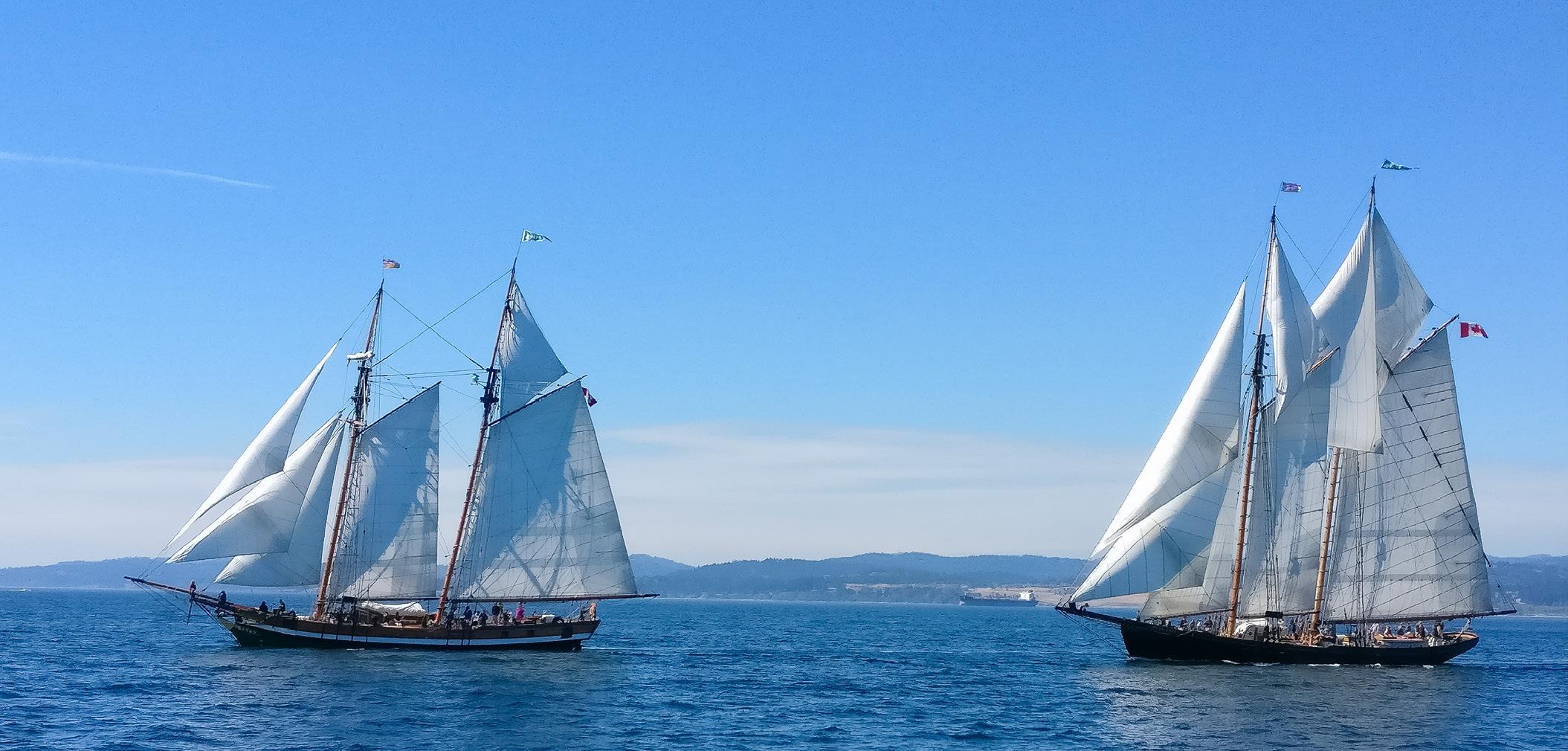
In recent years, Pacific halibut have entered the top echelon of fishes that anglers pursue. Halibut were once the domain of commercial fisheries and were harvested from southern California to the Bering Sea. For years, Canadian boats made the long trip to Alaskan waters where halibut in excess of 200 kilograms resided. Now, the entire fishery is tightly managed and each country fishes within its territorial waters.
In 1923, the International Pacific Halibut Commission was created to manage American and Canadian hali-
BY TOM DAVISIbut fisheries. This commission sets annual total allowable catches, while each country determines how their share of the catch will be allocated to domestic fishing groups. In Canada the catch is shared by First Nations, commercial and recreational fisheries with some dedicated for research. All harvest groups are part of the Canadian delegation at Halibut Commission meetings.
Pacific halibut have unusual characteristics. They begin life swimming normally with one eye on each side of their heads. However, within their first year they change into side-swimmers with one eye migrating to the same side as the other, like their smaller cousin the flounder. Halibut also grow to a massive size with females reaching more than 200 kilograms, while the males rarely exceed 30 kilograms. Halibut are migratory sometimes trav-
elling many thousands of kilometres. The migration pattern is generally from offshore to the landward side of the continental shelf. Halibut are more plentiful, and larger, the further north they reside along the West Coast. A 13-kilogram California halibut would be classed as large, while in northern BC waters it would be an appreciated but unremarkable catch.
Halibut populations are healthy while some important salmon runs are not, resulting in unprecedented salmon restrictions. These conditions inevitably encourage anglers to shift fishing effort from salmon to halibut. Another motivation is their excellent quality as a table fish. When properly prepared, halibut is amongst the finest tasting seafood available.
The good news is halibut angling is fairly easy to learn. The bad news is


Thanks to a decrease in salmon availability, halibut fishing has seen a rise in popularity on the west coast of BC
HankeringA halibut tandem hook rig with one circle hook.

it might require new investments in heavier rods, level wind reels and different terminal tackle to do it properly.
Tactics
Lots of halibut are caught by anglers trolling or jigging for salmon, but these catches are accidental and inconsistent.
Salmon anglers who encounter halibut do so because they are:
• Fishing close to a mixed sand, gravel and cobble bottom.
• Jigging or trolling slowly during low current velocities.
• Using baits or lures that attract halibut.
In other words, they were unintentionally using the where, when and what to use basics of halibut fishing.
Where: Halibut like bottom structure with cobble, gravel and sand. So relatively flat underwater banks, shoals and gradually sloping beaches are perfect for these bottom feeders. They are less
likely to be found hugging steep sloped drop-offs or muddy bottoms.
When: During slack water, halibut move from deep water onto shallower flats to feed on herring, crustaceans and other small fishes. Plan your fishing trips around the slacks when current velocity is less than two knots and lasts for long periods of time. Once you’ve committed to fish for halibut don’t lose patience if the bite isn’t immediate.
What to Use & How: There is a misconception that halibut are scavengers. While they do scavenge opportunistically, they are predators just like other apex saltwater species. Anglers need to keep this in mind and only use the best quality real baits or artificial lures with visual or scent cues that attract their attention. Halibut guides have adopted a sophisticated anchoring system that requires considerable investment in ground tackle. I doubt that weekend anglers or recreational boaters who just want an occasional halibut need to go to that extent unless they are determined to become halibut angling experts.
• Use your existing anchor system. This keeps the boat over your preferred fishing location. Be aware, however, it puts the anchor line close to the boat which risks entanglement when a halibut is on the line. Also, anchor far enough away from other boats so that wind and tide cannot push you onto their gear.
• Drift with the current. This is effective for jigging or using a spreader bar with herring or other natural baits. However, it does require constant rod tip monitoring to avoid bottom hook-ups. Anglers also must avoid drifting over anchor lines or fishing tackle from nearby anchored boats.
• Slow troll with downriggers. Keep your riggers within a few feet of bottom or even bounce bottom depending on the seabed composition. Run a 10 to 15-foot line from the rigger cable release clip to your bait or lure. Good baits include large scented hoochies, octopus tentacles, salmon belly and cod skin strips, or whole herring trolled in a teaser head or cutplugged.
Even small halibut can destroy salmon rods. Consequently, anglers need stiff six to seven-foot rods and star drag reels. Your line choice is also important. Purchase non-stretch fishing line and add a

TOM'S TIP
There aren’t many slow current halibut tides each month. So, find out when they are and fish them. These provide the best chance to put halibut on your dinner table.
few feet of 80 to 100-pound test leader between your baits and the main line. Landing a strong halibut is hard work. Electric reels make it easier. However, they cost from $700 to $2,400 should you have the urge to upgrade.
Fortunately, buying terminal tackle takes a much smaller bite out of your wallet. If you choose to slow troll with your downriggers, purchase some bigger hoochies. Or try eight to 10-inchlong salmon belly strips, similar sized octopus tentacles or herring rigged with big single hooks.
Jigging for halibut is another inexpensive option. Purchase a few halibut jigs with glow hoochies already attached; or just buy some jigs and tip them with real bait.
Spreader bars fished from an anchored boat are common halibut fishing gear. The bar has three connection points. One is for the main fishing line, the second takes the leader and bait and the third suspends a weight to keep the bait a few feet above bottom.



A hoochie tipped with real bait works well when fishing for halibut.


We make getting out of boat ownership a breeze. Donate your boat in support of our local community of sailors with disabilities and receive a tax receipt for its full market value.





We call that a win-win.
We call that a win-win.
more at


www.asabc.org/breeze






FOLLOW

THE RULES


TThe Back Cove 372, sporting a navy-blue hull and simple lobsterboat-inspired lines, presents a nice contrast to the chunky, modern styling of many new boats that seem to have abandoned any attempt to remain nautical. Perhaps it is the sailor in me, but I like boats that look like boats, and while I switched to power years ago, I don’t mind trading super-fast speeds for reasonable fuel burn. That is why the Back Cove 372 has so much appeal, it simply ticks a lot of boxes. The Back Cove cruises nicely at 20 knots using 60 litres per hour (15.8 gallons), has a smooth ride, comfortable cruising accommodations and timeless aesthetics that showcase deep maritime roots.
DESIGN AND CONSTRUCTION Boating experience has led me to respect practicality. Sometimes simple is better, and when a boat builder like Back Cove combines the pragmatism of a single diesel engine with the elegance of downeast styling it impresses me. That does not mean that the Back Cove 372 is old fashioned, far from it, as the boats are built with innovative composite technology and packed with modern amenities. The boats just

aren’t frivolous. Back Coves and their sister brand Sabre Yachts are serious like their experienced Maine-based builders. Their time-honoured styling not only looks good, but the design has been proven to perform and to endure in all conditions.
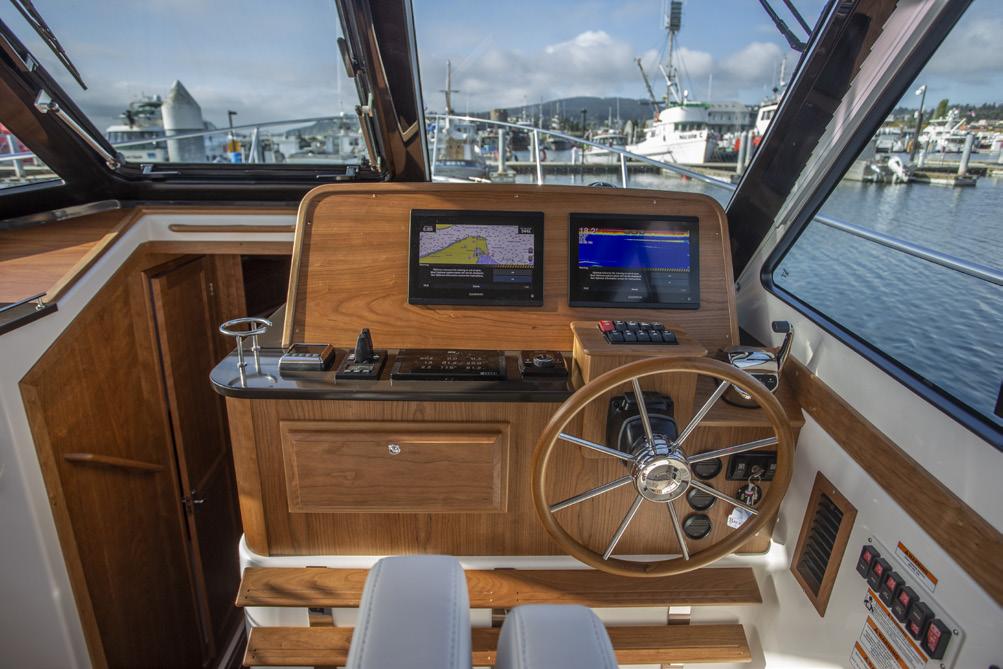
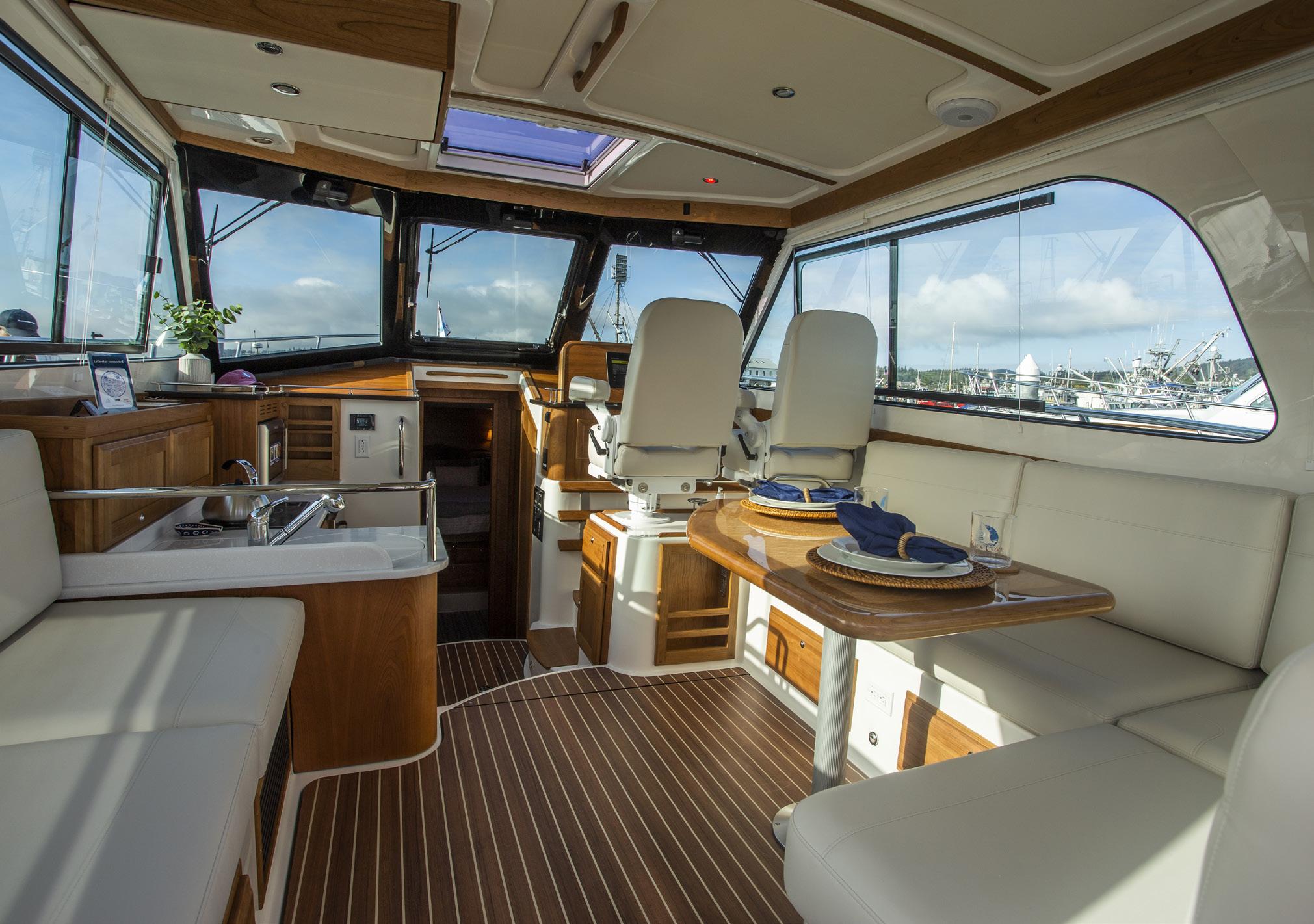

Like the commercial boats they are loosely derived from, Back Coves are
designed to handle the rugged conditions of coastal Maine. Hull bottoms are cored with PVC foam, vacuum infused and reinforced with a resin infused foam core stringer system. Resin infused balsa coring is used in the deck, which should not be off putting, because the way they isolate the wood should eliminate issues. End
grain balsa is scored into a fabric backed grid and infusion encapsulates each cell with resin preventing water intrusion. Cleats, rails and fittings are attached through solid sections, so fasteners don’t penetrate the coring. Back Cove prefers to use balsa because it maintains its strength in the long stretches of deck creating thinner panels that reduce weight.
SYSTEMS The Back Cove 372 is powered by a single Cummins QSC8.3 600-horsepower diesel that provides efficiency and range (Volvo Penta D8 is an option). I found dockside manoeuvrability effortless using the Side-Power joystick-controlled standard bow and optional stern thruster on our test boat. The boat is set up to be easily handled by a couple and with two of us on board
it was simple, with well-placed cleats, reasonable side decks, steps and stainless railings. An opening side window beside the helm eases communication while docking. Visibility is excellent from the helm and matching companion seat through three large windshields, the centre of which opens, all surrounded by blacked out mullions for glare reduction.






The aft bifold stainless and glass doors connect the saloon to the cockpit and provide good sightlines aft from the helm whether open or closed. Controls and electronics are accessed in a convenient dash pod from the Llebroc Ultraleather adjustable helm seat. An illuminated compass, USB charging station for phones, tablets and gadgets and a drawer for binoculars are nice touches. Three footrests provide comfortable
positioning, and the 20-inch Stazo wood grain wheel can be adjusted.
ON TEST I throttle up and accelerate smoothly out of Anacortes and into Padilla Bay to an impressive wide-open speed of 28.6 knots. Then settle back to 2,500 RPM where a fast cruise of 23 knots uses 79.7 litres per hour (21.1 gallons) yielding a modest 1.1 miles per gallon. At this speed, the efficiency of the single diesel yields a range of 296 miles based on 90 percent of the 1,136-litre (300-gallon) capacity. This gives the Back Cove 372 both the speed and range for extended cruising of the islands and the Inside Passage. At trawler speeds, range increases to more than 1,000 miles, allowing the Back Cove to cruise to Alaska. The SeaStar hydraulic steering is lively and responsive,
and the boat gently heels into turns. The Back Cove 372 feels comfortable and secure at the helm, and with a 10,024-kilogram (22,100-pound) displacement it tracks evenly and cuts through wakes without notice. The hull is a modified V forward with camber from the bow to the transom, creating a curved surface that softens the ride. The prop is in a tunnel and partially protected by a keel, skeg and rudder, creating a reasonable three-foot, seveninch (1.09-metre) draft that allows for shallow-water cruising.
INTERIOR The Back Cove 372 has a comfortable, fully climate-controlled saloon lounge area with a fold down table aft of the helm. A 32-inch LED Smart TV flips from the ceiling and pivots for better viewing from the saloon seating. When the weather is warm bifold doors fully open, joining the saloon to the cockpit, where plentiful seating both inside and out is ideal for simply relaxing or when entertaining. The fully equipped galley is a few steps down from the saloon under the
light of the windshield and features refrigerator/freezer drawers, an electric two-burner Kenyon induction cooktop and a deep stainless-steel sink with cover. A cut out in the Corian countertop cleverly pulls out so you can wipe debris directly into the garbage below. This mid galley provides convenient access to the helm and the seating and gathering areas aft. Windows and hatches with screens keep the saloon and galley light and airy and provide pleasant cross breezes when opened.
The master cabin forward has a queen island berth with reading lights, an overhead hatch, a cedar lined hanging locker and plenty of drawers and storage. A handy en suite door provides access to the head, which has a Tecma electric freshwater toilet and a separate shower compartment with a molded-in bench. The second private cabin is great for children and single adults. The limiting factor is the bed which is 91.4 centimetres (three feet, 10 inches) wide. The saloon table also converts to create a larger bed that can accommodate a second couple. The interior of the Back
Cove is brightly decorated with American cherry, which when combined with fine upholstery and quality fixtures creates a lively, nautical feel. “Teak and holly” soles add to the ambiance but are made of more practical textured highpressure laminate.
IF YOU ARE TIRED of new boats that look like shoe boxes and have more windows in their hulls than above deck, this stylish and practical cruiser should appeal to you. The Back Cove 372 can be easily handled by a couple and has the fuel economy, range and durability to cruise anywhere in style and comfort. Finely crafted and ruggedly constructed in North America this cruiser looks like a boat, handles like a boat and delivers a lot in a compact timeless design.
SPECS
LOA: 12.80 m / 42' 8"
Hull Length: 11.64 m / 38' 2"
Beam: 4.04 m / 13' 3"
Draft: 1.09 m / 3' 7"
Bridge clearance: 3.81 m / 12' 6"
Displ.: 10,024 kg / 22,100 lbs
Fuel (Diesel): 1,136 L / 300 USG
Freshwater: 454 L / 120 USG
Holding Tank: 189 L / 50 USG
Generator: Onan 9KW
Standard Power: 1X Cummins
QSC8.3 600HP (shaft drive)
Optional Power: 1X Volvo Penta D-8 600HP (shaft drive)
Built by: Back Cove Yachts, Maine backcoveyachts.com
Sold by: Bellingham Yachts, Bellingham WA 360-671-0990 bellinghamyachts.com


















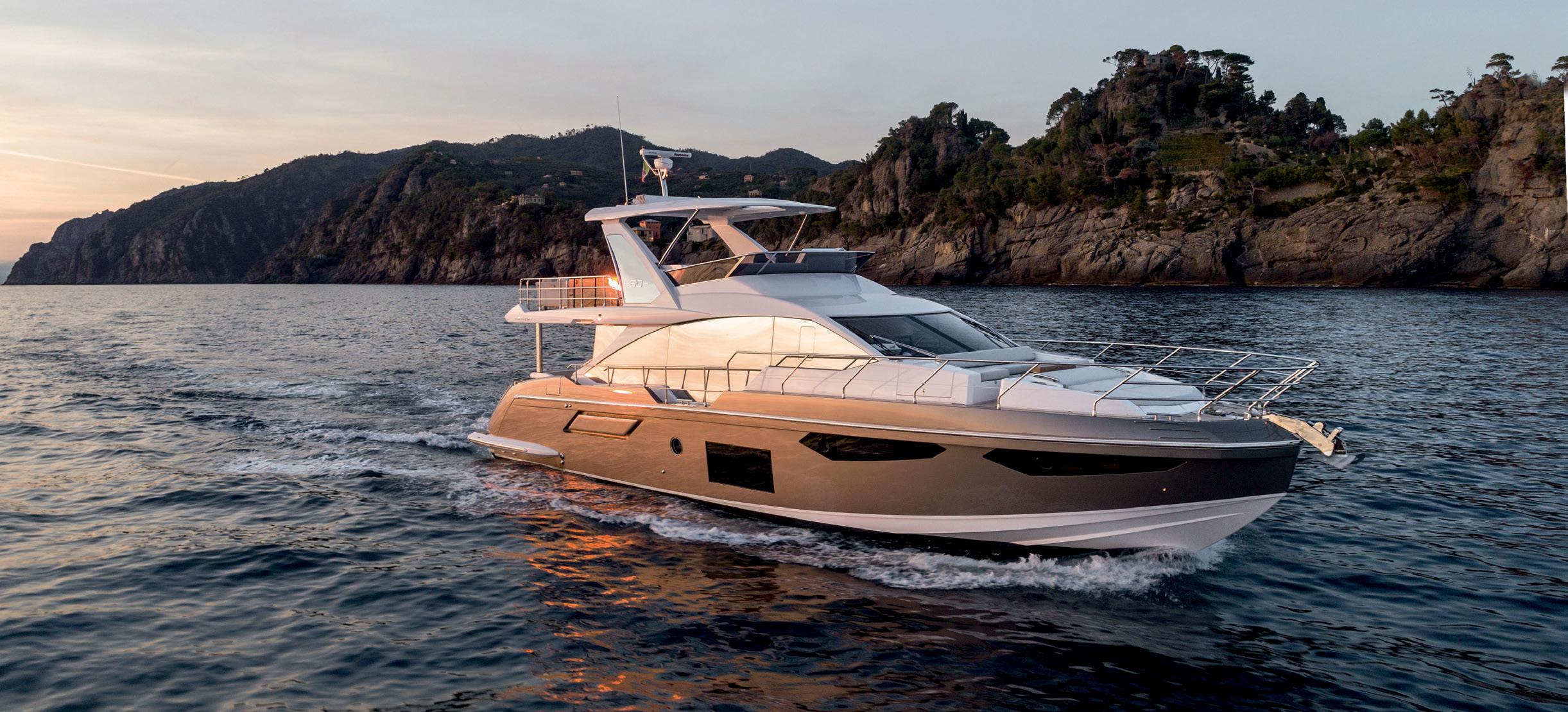


















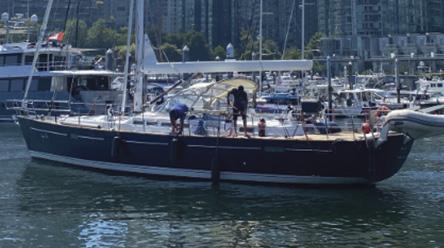

























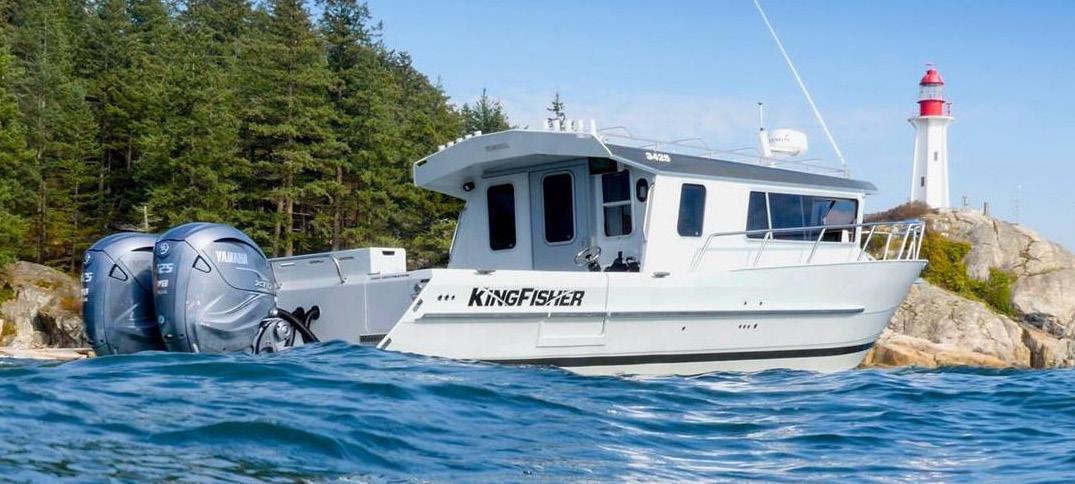














Since






















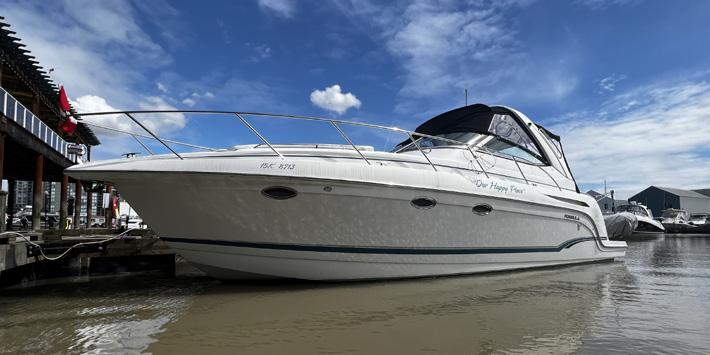








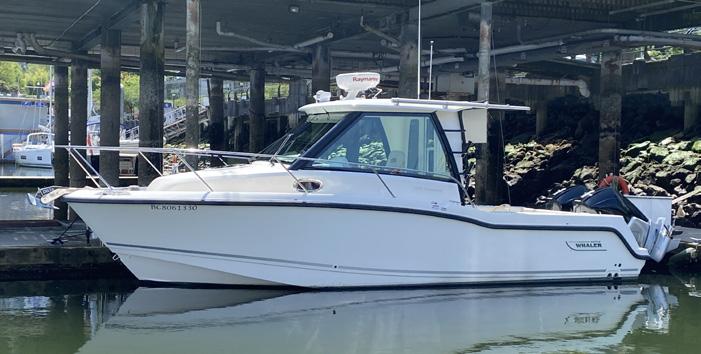

Beautifully finished interior, Massive upper Deck, Expansive covered Cockpit, Three station helm control, Twin Volvo Diesel, Northern Lights Genset, Watermaker, Large swim grid with Seawise Davit system, Sat Dome, Raymarine Hybrid Touch, Hurricane Hydronic Heat

This Well Equipped Yacht has ample room to Live and Entertain Autopilot, Bow Thruster, A/C Heat, 20 KW Genset, Cameras... Too many features to list!






































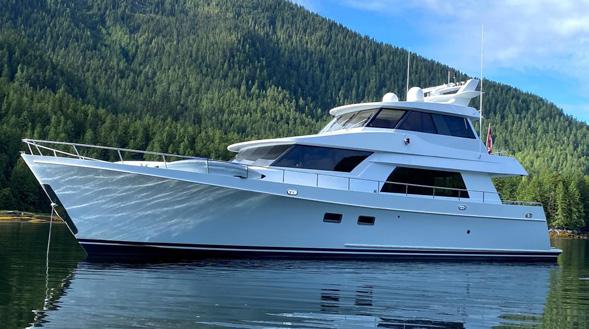











A new direction in the evolution of the Y class exterior design language, focussing on the development of refined, sophisticated surfaces in every area to generate a uniquely clean overall aesthetic. The new Y72 design features are comparable to those of larger Y yachts.

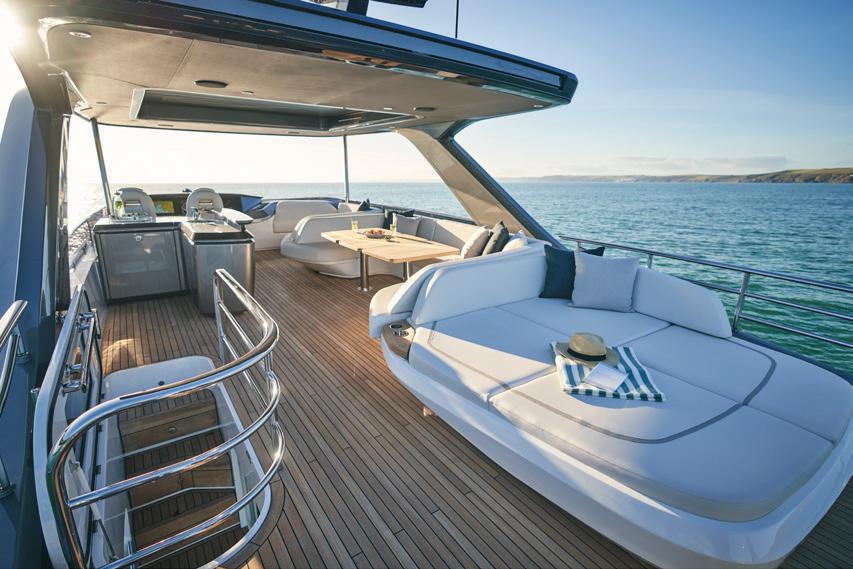

 Princess Y72
Princess Range
Princess Y72
Princess Range





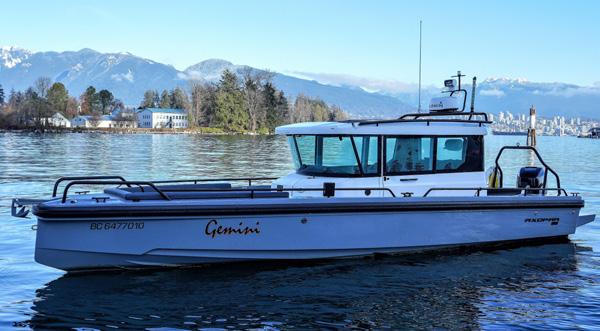












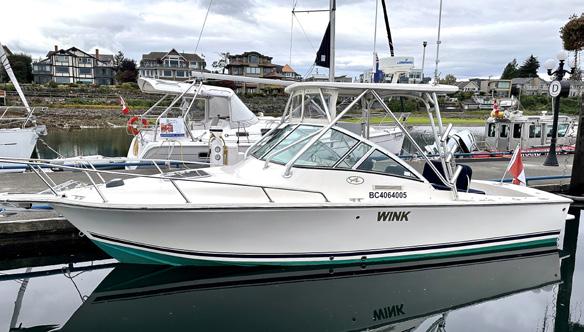





NEWLY LAUNCHED MOORAGE AVAILABLE WITH PURCHASE
SPORTY & EXHILIRATING SLEEK, INSPIRING AND ULTRA-AGILE — THE SHADOW 300, OFFERS ENDLESS POSSIBILITIES. DESIGNED TO INSPIRE ANYONE, NO MATTER THE BOATING EXPERIENCE, TO SPEND EXHILARATING MOMENTS OUT ON THE WATER.


























Radically innovative, agile and comfortable, the new Hanse 460 is simply ahead. This yacht, Hanse’s first by the French yacht designers Berret-Racoupeau, combines maximum innovation and traditional Hanse values, such as fast cruising and easy sailing - all with a consistently modern sporty look.



boatingfreedom.com/sail/hanse-yachts
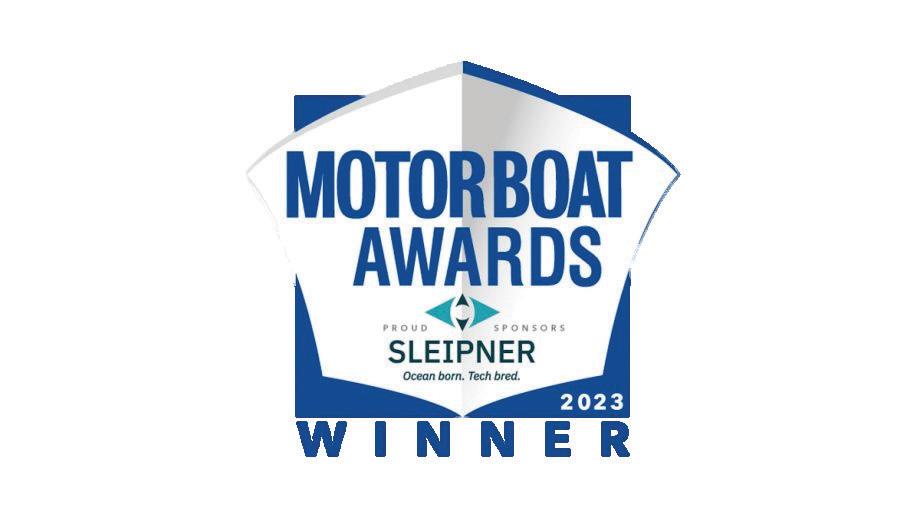
LIVE YOUR ADVENTURE WITH

DISCOVER WHY AXOPAR IS THE ULTIMATE ADVENTURE BOAT COMPANY WITH A FULL FLEET OF HIGH PERFORMANCE BOATS FROM 22 TO 45 FEET.


The 500 FLY is one of Galeon’s most award-winning and innovative yachts. The model sets benchmarks with its ever-popular Beach Mode, comprised of fold-out side decks. Optional rotating aft seat with garage underneath acts as a luxurious complement to space. On the flybridge, guests can take advantage of high-level features like a wetbar, sundecks, and a second, state-of-the-art helm station.






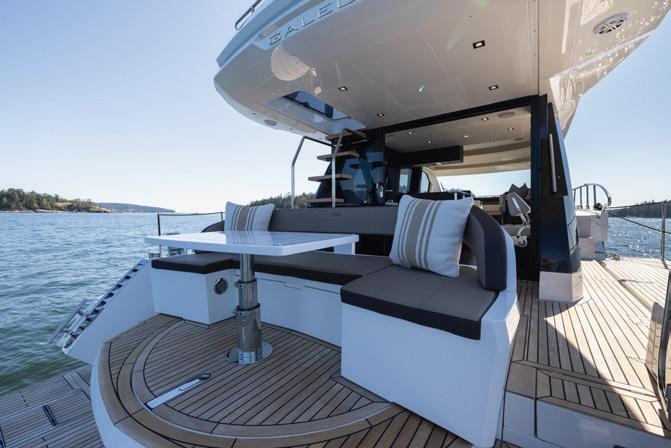
























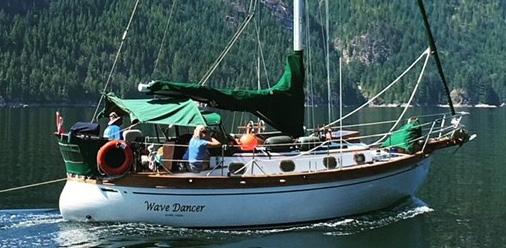





















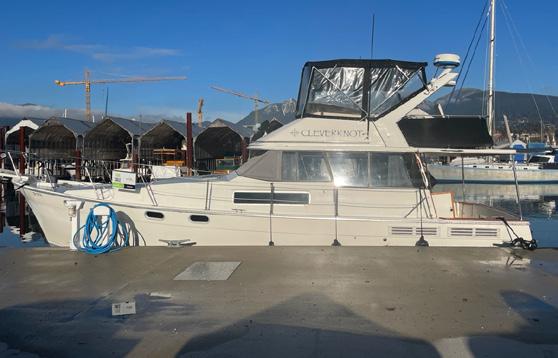





















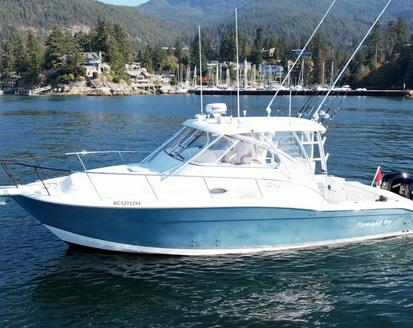




Gre g Andrew, CPYB Yacht Broker & New Sales gandrew@vanislemarina.com



Nynke Plouffe
Yacht Sales Coordinator



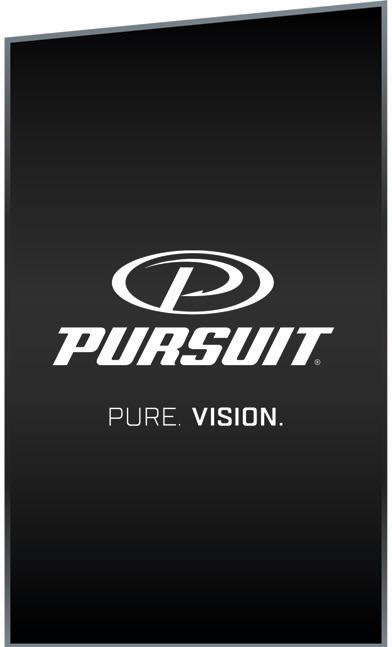
nplouffe@vanislemarina.com











Sidney, BC | 250 656 1138 vanislemarina.com





















BY APPOINTMENT
MARITIMO S62 2015 - Fully equipped, lithium ion batteries, low hours, Volvo shaft driven, 17” Garmin screens and much more.
$1,988,000 CAD
REGAL 4600 SPORTS COUPE 2013 - Fully glass enclosed with large sunroof for maximum versatility of environment. Spacious salon, and highly upgraded systems. $549,000 CAD

BAYLINER 5788, 2001 PILOT HOUSE - A full bridge enclosure, hurricane heating system, newer electronics and a Presto dinghy davit on the swim grid.

$689,000 CAD
CARVER 466 MOTOR YACHT, 2004 - Tastefully upgraded, boathouse kept, and just 886 hours on her Volvo 480hp diesels. $349,000 USD


CORBIN 39 1983 - Solid Off-Shore / West Coast design; Factory finished with many upgrades; Fully equipped for extended cruising. SOLD
BY APPOINTMENT
REGAL 3880 COMMODORE SEDAN BRIDGE 2004Twin Yanmars, gen, new dinghy on davits, great family cruiser!









$259,000 CAD
JEANNEAU VELASCO 37F, 2017 - Only 186 hours on the twin D4 300hp Volvo diesel motors. Loaded with options.
CAD
GARTSIDE 37 PILOTHOUSE 2020 - An exquisitely detailed west coast pilothouse, launched in 2020. Finest of materials used throughout inc. double planked red cedar/ epoxy hull. RAIN BEAR is a true gem that must be seen! $449,000 CAD
CATALINA MKII 36’, 2001 - 2020 installed cockpit enclosure, new (2019) Genoa solar panels, new (May 2020) batteries. $119,900 CAD
CUTWATER 28, 2013 - A well optioned example with features including bow and stern thruster, Volvo D4, 12inch chart plotter, aft steering station. Only 425hrs!


$179,000 CAD
for recreational use.

$95,000 CAD
LIQUID METAL MARINE QUATSINO 24’ 2021- Beautiful custom aluminum DC bowrider designed by Greg Marshal, launched in 2022. Volvo D4-270,16” Simrad Nevo multi-function, removable hardtop, Shockwave seats, enclosed head. $299,000 CAD

BOSTON WHALER OUTRAGE 22, 1988 - Classic Whaler with 2018 Suzuki F150, and 2018 9.9 Suzuki kicker! Touch screen lowrance plotter/fish finder, power windlass and only 143hrs. $54,000 CAD


AIRSOLID 27’ RIB 2006 - Commercially certified and registered for 12 passengers; full refit in 2022, new tubes 2021, 2022 Garmin 9” plotters; 2020 Evinrude E-TEC motors, warranty until 2027; tandem axle trailer. $ 120,000 CAD
CUSTOM 22’ PAUL GARTSIDE DESIGN 1986 - Fabulous pocket cruiser built at highly renowned Jespersen yard; elegant, simple & extremely sea worthy.


$49,900 CAD


































 DUFOUR 360 ON DISPLAY AT OUR DOCKS
BAVARIA R40 FLY TWO STOCK BOATS ARRIVING - JUNE AND JULY 2023
BAVARIA C45 ARRIVING ON OUR DOCKS - FEB 2023
DUFOUR 360 ON DISPLAY AT OUR DOCKS
BAVARIA R40 FLY TWO STOCK BOATS ARRIVING - JUNE AND JULY 2023
BAVARIA C45 ARRIVING ON OUR DOCKS - FEB 2023
Sellers and buyers both benefit from a BCYCA member’s experience. BCYBA brokers assist buyers to find suitable boats in the local market or further afield in the international market. Similarly, they present locally owned boats for sale to local and international buyers.
Take the stress out of purchasing or selling your boat. A BCYBA broker is your guide through a successful transaction. They help in these ways:
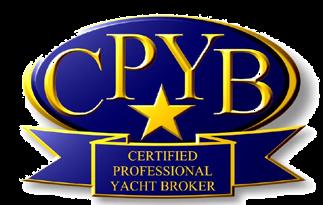

• Identify and evaluate yachts of interest.
• Provide experience in negotiating acceptable sale terms.
• Ensure your deposit stays in Canada.
• Outline vessel documentation, title, importation, insurance and taxation issues.
• Utilize strong working relationships with co-operating brokers, marine surveyors, marine mechanics, boatyards and other key industry contacts.
• Provide local follow up to help you in your boating adventures.




































Fabulous 6.77 acres with 426± ft of low bank walk-on oceanfront located on Taylor Bay on the northwest corner of Gabriola Island. The Haven is a long established not-for-profit centre for transformational learning which can be enriched, expanded or transformed into a resort, private residence or your vision. Improved with 16 buildings totalling over 37,000 sq. ft. that can accommodate up to 120 guests. Includes main lodge, dining room, auditorium with event stage, fitness center, pool, hot tub and sundeck. Income from program participants, group and event rentals, and resort / Airbnb guests. 4 adjacent residential properties also available. The lodge and oceanfront are surrounded by a parklike setting of mature coastal Douglas fir and cedar. NOW $5,200,000
RICHARD OSBORNE
Personal Real Estate Corporation
604-328-0848 rich@landquest.com
JASON ZROBACK 1-604-414-5577 jason@landquest.com
JAMIE ZROBACK 1-604-483-1605 jamie@landquest.com

Spectacular setting on Nechako River, 60 km SW of Vanderhoof 3,933 acres, 39 titles, over 17 km on both sides of the Nechako River. 5 homes / accommodation buildings, recreation hall, dining hall, office building set up as spiritual healing center with tourism potential, RV sites, barn, corrals ranch leased for grazing. Many layers of value $4,995,000
RICHARD OSBORNE
Personal Real Estate Corporation
604-328-0848 rich@landquest.com
Pristine south-facing waterfront home on Lake Cowichan with 90+ ft of gentle sloping beach frontage. 2,100 sq. ft. home with large windows throughout offering views from every room of the house, a 10 x 20 ft landing followed by a 54 ft aluminum ramp leading to a new 10 x 24 ft private dock. Sit around the fire pit on the pebbled beach and enjoy the peaceful tranquility of the lake. $2,250,000


KEVIN KITTMER 250-951-8631 kevin@landquest.com
SHERIDAN LAKE RESORT LONE BUTTE,

Trophy lakefront resort! Maybe the most famous resort in the Cariboo with trout to 15 lbs. Resort has attracted travellers for decades. 19 cabins most with bathrooms and kitchens. 84 serviced RV sites, 36 slip marina with breakwater and more. Tons of recent upgrades and reno’s. $3,795,000

SAM HODSON
Personal Real Estate Corporation 604-809-2616 sam@landquest.com
6 ACRES OF SKEENA RIVERFRONT BARE LAND - HAYSPORT, BC
Exciting opportunity! You can own six acres, on seven bare land titles on the Skeena River. The properties are water access and are located on both sides of the Canadian National Railway. Great as a land investment or jumping off spot for fishing adventures. NOW $49,000

JOHN ARMSTRONG
Personal Real Estate Corporation 250-307-2100 john@landquest.com


OCEANFRONT DREAM OSLAND - SMITH ISLAND
Where the Pacific Ocean and Skeena River meet, this waterfront off-grid home overlooks the everchanging ocean and river waters. This 1.07 acre property enjoys 260 feet of oceanfront and 225 feet of riverfront. $549,000


JOHN ARMSTRONG
Personal Real Estate Corporation

250-307-2100 john@landquest.com
CUSTOM TIMBER FRAME HOME ON 12 ACRES DECOURCY ISLAND
12+ acres on Decourcy Island with subdivision potential. Custom built 1,800 sq. ft. timber frame home completed in 2017. 3 bedrooms, 2 bathrooms plus loft. Partial ocean view. Decourcy Island has an excellent marina and community hall adding to the overall attraction of the island. $768,000
JASON ZROBACK 1-604-414-5577 jason@landquest.com
JAMIE ZROBACK 1-604-483-1605 jamie@landquest.com
EXECUTIVE LAKEFRONT HOME AND ACREAGE - PUNTZI LAKE
Stunning, custom built, timber frame, 2 storey home on Puntzi Lake just 2 hours west of Williams Lake. This 6.2 acre property is also complete with a heated carport, 350 ft of waterfront, income potential and has easy access by floatplane right to the front yard, or by the 6,000 ft paved airstrip just 10 minutes away. $1,400,000
FAWN GUNDERSON
Personal Real Estate Corporation 250-982-2314 fawn@landquest.com
OCEANFRONT COTTAGE IN A SPECTACULAR LOCATION - SEVILLA ISLAND
Located minutes from Lund Harbour, Savary Island and Desolation Sound. Includes 2 oceanfront lots with approx. 400 ft of waterfront and a 1,480 sq. ft., 3 bedroom, 3 bath Pan Abode home and workshop that is conveniently hooked up to sewer, water and power. $759,000


JAMIE ZROBACK 1-604-483-1605 jamie@landquest.com
JASON ZROBACK 1-604-414-5577 jason@landquest.com
OCEANFRONT HOME WITH LARGE DOCKS
DENNY ISLAND - CENTRAL COAST
Bright, beautiful 3 bedroom home on 0.97 oceanfront acres. Large windows, spacious decks, detached guest suite, private docks with 500 ft of breakwater all with stunning views! This property is in a prime location with excellent outdoor recreation, road or boat access and just minutes from the ferry terminal, Shearwater Marina and the airstrip.
$1,200,000
FAWN GUNDERSON
Personal Real Estate Corporation 250-982-2314 fawn@landquest.com
MAGNIFICENT 60 ACRE SUNSHINE COAST FARM POTENTIAL - GIBSONS, BC
Elphinstone Farm is a picturesque paradise nestled between towering Mount Elphinstone and scenic Howe Sound sprawled across 60.62 acres. 3,649 sq. ft. residence, 2 greenhouses, game fencing, 6± acres of blueberry and blackcurrant bushes, 5± additional acres ready for planting. $2,950,000

COLE WESTERSUND - WESTERN LAND GROUP
Personal Real Estate Corporation 604-360-0793 cole@landquest.com
This luxurious 1/4 share ownership, corner suite villa is one the largest homes & enjoys stunning ocean & island views. Protected deep water moorage.
the
Nearly 3,000 sq.ft. oceanview home in a quiet location, steps to the
Spectacular 3bed/2bath rancher situation on 0.75 acre oceanfront property with Western exposure, stunning sunsets & great privacy.
Sechelt • $2,850,000


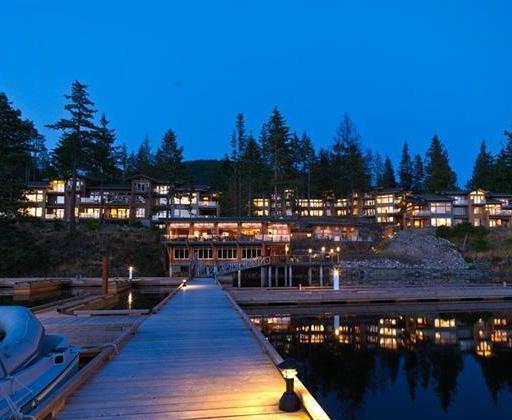
Immaculately maintained waterfront home on a quiet cul-de-sac in Halfmoon Bay! Spectacular ocean & island views are front & centre from this lovely 2bed/2bath home
Luxurious waterfront home with every imaginable feature! The unique co-ownership model with “wecasa” allows owners a slice of the luxury market at a fraction of the price.
Halfmoon Bay • $1,650,000
Immaculately maintained waterfront home! This lovely 3bed/2bath West Coast home is bright and sunny and offers spectacular ocean & island views.
Immaculately maintained waterfront home! This lovely 3bed/2bath West Coast home is bright and sunny and offers spectacular ocean & island views.
Halfmoon Bay • $1,800,000
Halfmoon Bay • $1,800,000
First time on the market, stunning private esplanade lakefront acreage! This is one of the last large acreages (13.88) on Hotel Lake, featuring unobstructed & panoramic lake views & sunshine.

Garden Bay • $1,398,000
SOLD
1st time on the market, this spectacular 5+ acre parklike setting at Ruby Lake features 2 separate homes & is the kind of property that sets a new pace the minute you arrive.
Stunning architecturally designed West Coast waterfront home with protected deep water moorage. Situated on a prime corner lot in the highly desirable “Whittakers” community.
Ruby Lake • $1,699,000
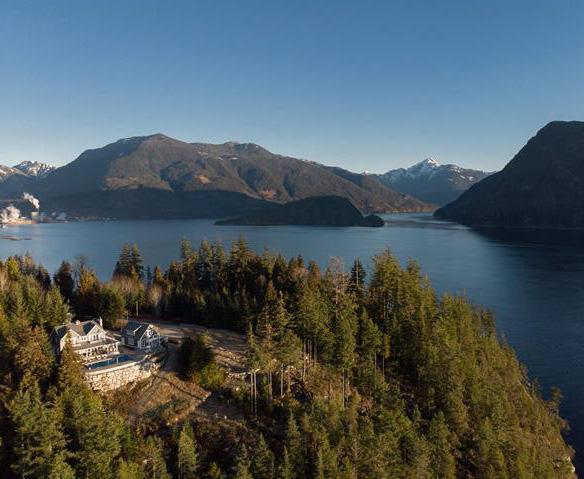
Don't miss this custom built, brand new 4bed/4bath home in one of Madeira Park's loveliest & quietest locations, steps to Baker Beach, one of the area's finest!
Don't miss this custom built, brand new 4bed/4bath home in one of Madeira Park's loveliest & quietest locations, steps to Baker Beach, one of the area's finest!

Gibsons • $2,150,000
Madeira Park • $1,850,000
Madeira Park • $1,850,000
Very private low bank waterfront just mins to Sechelt! Easy access to the pristine beach from this 2,800+ sq.ft. recently reno'd Rancher with level entry access.
Very private low bank waterfront just mins to Sechelt! Easy access to the pristine beach from this 2,800+ sq.ft. recently reno'd Rancher with level entry access.






Sechelt • $2,299,000
Great family home with 1 bedroom suite on the lower level. Situated on a level, sunny 1/2 acre & walking distance to the beach, the golf course and more! Great value.
Sechelt • $2,299,000
Gorgeous waterfront home with easy access into the ocean for swimming or launching a kayak, as well as stunning, unobstructed ocean/ island views!
Gorgeous waterfront home with easy access into the ocean for swimming or launching a kayak, as well as stunning, unobstructed ocean/ island views!
Garden Bay • $1,998,000
Garden Bay • $1,998,000
Kendrick Inlet Shellfish
Tenure: 13.5 acre shellfish farm in Kendrick Inlet. Very productive manila clam beach with small section of oyster culture. Excellent location adjacent to Crown land, lease in good standing. West coast Vancouver Island. $160,000
DL 6, Noeick River: 178 acres, ocean and riverfront south of Bella Coola, at the mouth of the Noeick River
Potentially harvestable 2nd growth spruce on a portion of the property. Completely off grid. In the Great Bear Rainforest , on the BC Coast $850,000
DL 6, Noeick River: 178 acres, ocean and riverfront south of Bella Coola, at the mouth of the Noeick River. Potentially harvestable 2nd growth spruce on a portion of the property. Completely off grid. In the Great Bear Rainforest , on the BC Coast. $850,000
Lot 17 Pearse Island: 1.07 acres oceanfront in the Broughton region. Beautiful southern exposure with views across Johnstone Strait to Vancouver Island. The property is fully forested with a complement and mix of mature conifers and some alder. $190,000
Orca Inn, Alert Bay: Inn and restaurant/pub with lots of potential! Commercial kitchen, 3 rental units plus self-contained manager’s suite, retail space. Region renowned for whale watching, fishing and First Nations cultural activities. $600,000
Orca Inn, Alert Bay: Inn and restaurant/pub with lots of potential! Commercial kitchen, 3 rental units plus self-contained manager’s suite, retail space. Region renowned for whale watching, fishing and First Nations cultural activities. $600,000
Nootka Sound Shellfish Tenure: 3.7 acres beachfront oyster and clam farming opportunity in the protected waters of Plumper Harbour. Significant standing crop, good

West Coast Oceanfront: 3.56 acres in the Hot Springs Oceanside development north of Tofino on Vancouver Island’s west coast. Nicely forested, diverse shoreline
West Coast Oceanfront: 3.56 acres in the Hot Springs Oceanside development north of Tofino on Vancouver Island’s west coast. Nicely forested, diverse shoreline including a peninsula and bay. Protected location, southern exposure. Water access only. $159,900

Shelley McKay Personal Real Estate Corporation 250.830.4435

shelleymckay@bcoceanfront.com


The BC Oceanfront Real Estate Team Greg du Cloux 250.895.1346

gregducloux@bcoceanfront.com
QUADRA ISLAND
AFFORDABLE GRANITE BAY ACREAGE
AFFORDABLE GRANITE BAY ACREAGE
Are you ready for island time?
Are you ready for island time?
Bill Bradshaw PERSONAL REAL ESTATE CORPORATION
MLS# 914258
PERSONAL REAL ESTATE CORPORATION Sarah Bradshaw
Sarah Bradshaw
1.877.735.3292
250.285.3293
•6.5 acre lot located on northwest corner of Quadra Island•Comes with driveway into property, drilled well and hydro services to property line•In an area with great outdoor recreation: hiking, kayaking, sports fishing•Community wharf and boat ramp minutes away•Located 20 minutes from services in Heriot Bay
MLS # 398896 • $139,000
•6.5 acre lot located on northwest corner of Quadra Island•Comes with driveway into property, drilled well and hydro services to property line•In an area with great outdoor recreation: hiking, kayaking, sports fishing•Community wharf and boat ramp minutes away•Located 20 minutes from services in Heriot Bay MLS # 398896 • $139,000
QUATHIASKI COVE OCEANVIEW RANCHER & RENTAL TRAILER
QUATHIASKI COVE OCEANVIEW RANCHER & RENTAL TRAILER
room trailer currently rented out to long-term tenant
•Shor t walk from all services in Quathiaski Cove
of privacy along front of home• Up the hill is a 2 bedroom trailer currently rented out to long-term tenant

MLS# 398397 • $249,000
•Shor t walk from all services in Quathiaski Cove
MLS# 398397 • $249,000
billbradshaw@royallepage.ca
sarahbradshaw@royallepage.ca www.quadrarealestate.ca
billbradshaw@royallepage.ca
sarahbradshaw@royallepage.ca
www.quadrarealestate.ca
Centre Island : 110 acre private island in Esperanza Inlet, west coast Vancouver Island. Numerous little bays, peninsulas, and bluffs. Oneroom cabin plus workshop,

Lot 18 Pearse Island: 1.08 acre oceanfront property in the Broughton region, with approx. 85ft frontage on Johnstone Strait. Fully forested, good privacy,


Centre Island : 110 acre private island in Esperanza Inlet, west coast Vancouver Island. Numerous little bays, peninsulas, and bluffs. Oneroom cabin plus workshop, fresh water ponds, complement of equipment. Quick access to the open west coast! $1,790,000

QUADRA ISLAND REAL ESTATE TEAM






AFFORDABLE GRANITE BAY ACREAGE
AFFORDABLE GRANITE BAY ACREAGE
•6.5 acre lot located on northwest corner of Quadra Island•Comes with driveway into property, drilled well and hydro services to property line•In an area with great outdoor recreation: hiking, kayaking, sports fishing•Community wharf and boat ramp minutes away•Located 20 minutes from services in Heriot Bay
$2,200,000 MLS# 915885
•6.5 acre lot located on northwest corner of Quadra Island•Comes with driveway into property, drilled well and hydro services to property line•In an area with great outdoor recreation: hiking, kayaking, sports fishing•Community wharf and boat ramp minutes away•Located 20 minutes from services in Heriot Bay
QUATHIASKI COVE OCEANVIEW RANCHER & RENTAL TRAILER
QUATHIASKI COVE OCEANVIEW RANCHER & RENTAL TRAILER
•Great ocean views of Quathiaski Cove and Discovery
Passage•Rancher is at foot of 0.41 acre lot next to ferry to Campbell River• Mature shrubs provide lots of privacy along front of home• Up the hill is a 2 bed room trailer currently rented out to long-term tenant


•Shor t walk from all services in Quathiaski Cove MLS# 398397 • $249,000
•Great ocean views of Quathiaski Cove and Discovery Passage•Rancher is at foot of 0.41 acre lot next to ferry to Campbell River• Mature shrubs provide lots of privacy along front of home• Up the hill is a 2 bedroom trailer currently rented out to long-term tenant •Shor t walk from all services in Quathiaski Cove MLS# 398397 • $249,000
billbradshaw@royallepage.ca
sarahbradshaw@royallepage.ca www.quadrarealestate.ca
billbradshaw@royallepage.ca | sarahbradshaw@royallepage.ca www.quadrarealestate.ca

740 SEA D RIVE , CE N TRAL SAA N ICH , BC V8 M 1B 1

B O ATER S and L ov ers o f t h e S ea y ou w i l l de l ig h t in t h is O CEANF R ONT r et r eat designed wit h w all s of gl a s s on th r ee l e v e ls t o p r o vide SPEC TA CULAR Top of t he World VIEW S , scarlet SUNSETS and a n e v e r - c han g in g Vis t a of w i l d l i f e and SA IL S ! Co m e t o t h e w est side whe r e w ar m Bea c he s , But c ha r t G a r dens Fi r e w or k s , c r a b , and p r awn shin g a r e natu r e ’ s g ift - T he r en o wned B r ent w ood B a y L od g e , Blue ’ s B a y ou r es t au r ant , co n v enient Mi l l B a y F er r y & m u c h m o r e combine with 3,750 SF of CUS TO M -
in g Vis t a of w i l d l i f e and SA IL S ! Co m e t o t h e w est side whe r e w ar m Bea c he s , But c ha r t
G a r dens Fi r e w or k s c r a b and p r awn shin g a r e natu r e ’ s g ift - T he r en o wned B r ent w ood B a y L od g e
y ou w i l l de l ig h t in t h is O CEANF R ONT r et r eat , designed wit h w all s of gl a s s on th r ee l e v e ls t o p r o vide SPEC TA CULAR Top of t he World VIEW S , scarlet SUNSETS and a n e v e r - c han g in g Vis t a of w i l d l i f e and SA IL S ! Co m e t o t h e w est side whe r e w ar m Bea c he s But c ha r t G a r dens Fi r e w or k s , c r a b , and p r awn shin g a r e natu r e ’ s g ift - T he r en o wned B r ent w ood B a y L od g e , Blue ’ s B a y ou r es t au r ant , co n v enient Mi l l B a y F er r y & m u c h m o r e combine with 3,750 SF of CUS TO M -


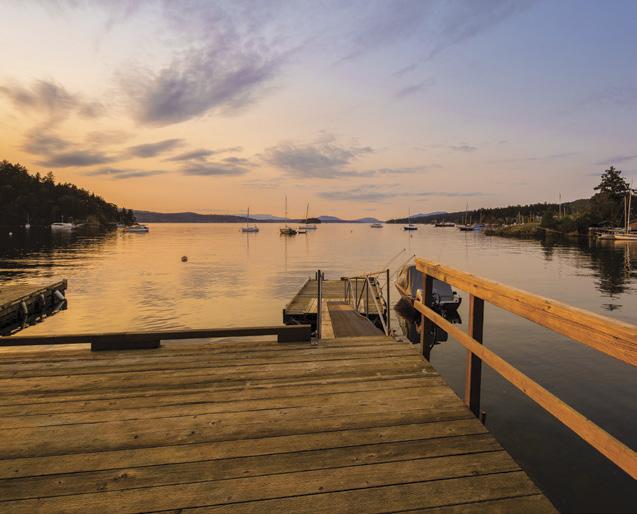

B UI LT Livin g NEW LE G A L M OD ERN 1- B ED R OO M sui t e wit h b ountiful Ocean Vi e w s c r af t ed wit h al l ameni t ie s in m ind , t o g ua r an t ee y our friend s and f a m ily will deli g ht in vi s itin g . An abundanc e of accom m odation in c l uding a n e w r oo f, natu r al gas run t o the p r ope r t y, and 105 ft of O cea n f r on t a g e ov er l ookin g B RENT W OO D B AY, PLU S a pri v a t e DEEP- WATER DOCK WITH Gene r al F o r e s ho r e Licence is a r a r e G e m indeed! I m a g ine t y in g up a Boat f r o m y our v e r y o wn do c k , comp l e t e wit h f r es h w a t er and p o w e r Boo k soon f or S E A d r ea m s co m e true! L IS
Blue ’ s B a y ou r es t au r ant , co n v enient Mi l l B a y F er r y & m u c h m o r e combine with 3,750 SF of CUS TO MB UI LT Livin g NEW LE G A L M OD ERN 1- B ED R OO M sui t e wit h b ountiful Ocean Vi e w s , c r af t ed wit h al l ameni t ie s in m ind , t o g ua r an t ee y our friend s and f a m ily will deli g ht in vi s itin g An abundanc e of accom m odation in c l uding a n e w r oo f, natu r al gas run t o the p r ope r t y, and 105 ft of O cea n f r on t a g e ov er l ookin g B RENT W OO D B AY PLU S a pri v a t e DEEP- WATER DOCK WITH Gene r al F o r e s ho r e Licence is a r a r e G e m indeed! I m a g ine t y in g up a Boat f r o m y our v e r y o wn do c k , comp l e t e wit h f r es h w a t er and p o w e r Boo k soon f or S E A d r ea m s co m e true! L IS T ED AT $ 3, 450 , 000 ML S ® 91330 3
B UI LT Livin g NEW LE G A L M OD ERN 1- B ED R OO M sui t e wit h b ountiful Ocean Vi e w s , c r af t ed wit h al l ameni t ie s in m ind , t o g ua r an t ee y our friend s and f a m ily will deli g ht in vi s itin g An abundanc e of accom m odation in c l uding a n e w r oo f, natu r al gas run t o the p r ope r t y, and 105 ft of O cea n on t a g e ov er l ookin g B RENT W OO D B AY, PLU S a pri v a t e DEEP- WATER DOCK WITH Gene r al F o r e s ho r e Licence is a r a r e G e m indeed! I m a g ine t y in g up a Boat f r o m y our v e r y o wn do c k , comp l e t e wit h f r es h w a t er and p o w e r Boo k soon f or S
m s co m e true! L IS





6489
ca

ROAD, METCHOSIN, BC
5484 SQFT | $10,600,000. Luxury Farm Estate on 18 acres of Oceanfront property. Private sanctuary self-sufficient lifestyle. Updated main home is a renovated 1930 farmhouse, offering 4 beds, with an additional 1 bed bedroom barn for guests. Outside, resort style living, with 550 feet of low bank shoreline, expansive patios, trails, fruit trees and more. This is truly a one of a kind opportunity!
$10,600,000. Luxury Farm Estate on 18 acres of Oceanfront property. Private sanctuary main home is a renovated 1930 farmhouse, offering 4 beds, with an additional 1 bed guests. Outside, resort style living, with 550 feet of low bank shoreline, expansive patios, This is truly a one of a kind opportunity!
James
LICENSE PARTNER - PRIVATE OFFICE ADVISOR 250.812.7212



LICENSE PARTNER - PRIVATE OFFICE ADVISOR
250.812.7212
james.leblanc@engelvoelkers.com jamesleblanc.evrealestate.com
james.leblanc@engelvoelkers.com jamesleblanc.evrealestate.com

Panoramic views of river & mountains from this stunning float home. Complete with secure moorage for your yacht & 3 car garage all on 132' (Double Lot) of river frontage. Once in a lifetime opportunity to own this exquisite home. Conceived & designed by Architect Jennifer Heath & Designer Jane Dabrowski & custom built by Pinnacle Homes. This welcoming home is filled with light and ambience. Welcoming large and small groups of family or guests inside and out. Designed to showcase top quality finishes– solid walnut flooring and walnut feature walls & built-ins.

8338 WEST
6
9
| 8182 SQFT | $18,750,000. Exquisite custom-built West Coast estate Saanich Inlet. This private, gated property is surrounded by mature forest, low-bank water dock and a helipad. With over 8000 sq ft of luxurious living space, including a 2 bedroom provides ample space for family and friends to enjoy resort-style living year round. For
6 BEDS | 9 BATHS | 8182 SQFT | $18,750,000. Exquisite custom-built West Coast estate set on seven acres, Saanich Inlet. This private, gated property is surrounded by mature forest, low-bank ocean frontage, complete water dock and a helipad. With over 8000 sq ft of luxurious living space, including a 2 bedroom detached guest provides ample space for family and friends to enjoy resort-style living year round. For more details, visit oceanenclave.ca.
Scott
LICENSE PARTNER - PRIVATE OFFICE ADVISOR

LICENSE PARTNER - PRIVATE OFFICE ADVISOR 250.686.7789 scott.piercy@engelvoelkers.com scottpiercy.evrealestate.com



250.686.7789 scott.piercy@engelvoelkers.com scottpiercy.evrealestate.com

6 BEDS | 9 BATHS | 8182 SQFT | $18,750,000. Exquisite custom-built West Coast estate set on seven acres, overlooking the Saanich Inlet. This private, gated property is surrounded by mature forest, low-bank ocean frontage, complete with a deep water dock and a



Entertain to your heart’s delight in the gourmet Thermador kitchen designed to enjoy the unbeatable views while you cook and entertain on your 700 sq. feet of deck all warmed by gas heaters for 3 season enjoyment.
LeBlanc Piercy BEDS | BATHS James LeBlanc






















ASKING $179,000

Fully equipped 1999 4082 Bayliner , Aft cabin with private head/shower, 2nd head and cabin in bow with lower berth, sleeps 6 comfortably, Twin 270 Cummins with rebuilt turbos. New Ray marine 3 D Axiom and Garmin Backup with Radar, AIS, Stereo, cell booster , 2 flat screen TVs, Glass window and wiper at upper helm, New Bow & Stern thrusters, New Lemar windless, 10’Bulldog tender on davits. To many more options to list. Vessel is very well maintained Bow to Stern. Will consider trade for 30’ Commander. Call Dave 250-615-7225




2005 Tournament Express Flush Deck version 315hp Yanmar diesel. Comes with nine-foot alum RIB with new 6hp Yamaha – all on a SeaWise tilt-up davit system. New electronics plus Lifeline AGM batteries. Bowthruster. Pilothouse canvas enclosure. Navy-blue hull. $149K, Call Bill 250-537-2251 or cell 604-880-3551


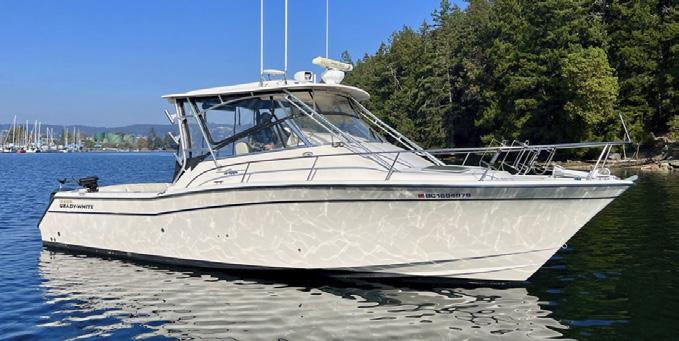




















for about a minute until my nerves had settled and then slipped her into forward and we resumed our six knots. Neither my father nor I could think of any explanation for what was happening. After smoothly making our way through the flat water it happened again! It was the same five explosions and vibrations just like before. This time I didn’t touch the throttle. I just wanted to get out of this haunted piece of ocean in one piece.
A short while later I noticed two large ships in the distance that didn’t look like the usual freighters we were accustomed to be on the lookout for. I had a look through the binoculars to try and make out what they were from their silhouettes. While I was studying their outlines, I saw puffs of smoke coming from one of the ships. One, two, three, four, five of them in quick succession.
Not too long after, I heard and felt the sounds coming from the engine compartment again! When we got a little closer, I could make out that they were warships engaging in target practice with a floating target. We were too far away to hear the report of the guns, but the sound had travelled through the water and resonated with our concrete hull just like a drum.
Dad and I took it in stride and consoled ourselves that it was a “welcome home” salute from the Canadian Navy for two weary and homesick sailors.


Have a funny or interesting story? Cockpit Confession is a readersubmitted column and we are always looking for another good yarn. Send your 600-word story to editor@pacificyachting.com. We’ll send you a T-shirt!




It was the late summer of 1982. My father and I were returning home from our round-trip to Hawaii in the 46foot Sampson Seabreeze ferro-cement boat that the family had built from scratch in our backyard. After years of learning to sail in the Gulf Islands, and venturing out for a couple of weeks in Desolation Sound, this was to be our first—and last—“experience of a lifetime” blue-water cruise. We were pretty much exhausted from our four-
 BY DEREK SMITH
BY DEREK SMITH
Imonth adventure but were still about five days out from Victoria when the wind died. After a brief discussion, the decision was made to fire up the iron wind and get back home. After about a day under power, with our little four-cylinder Land Rover diesel purring smoothly, confidence was running high. We would soon be on dry land once more!
Without any warning, a frightening boom, boom, boom, boom, boom sound started coming from the engine compartment that made the whole boat reverberate. I immediately shut down the engine and cautiously lifted the floorboards in the cockpit, expecting to see a smoking mess where the engine used to be. To my astonishment, there sat our little green engine looking exactly as it always had with
no signs of catastrophe anywhere. After about 20 minutes of climbing around the engine and looking at it from every angle, we turned the key to see if she would start. That little beauty fired up and purred like nothing had happened! After a minute at idle I slipped her into forward and slowly eased the throttle ahead until we were back to our six-knot cruising speed. Everything seemed normal, and we were once again heading for home. With fingers crossed and the floorboards still up, we steamed along for another hour until it happened again. Boom, boom, boom, boom, boom! I pulled the throttle back to idle and looked at the engine and still everything looked normal. I waited
Continued on page 113
Mike Mockford








